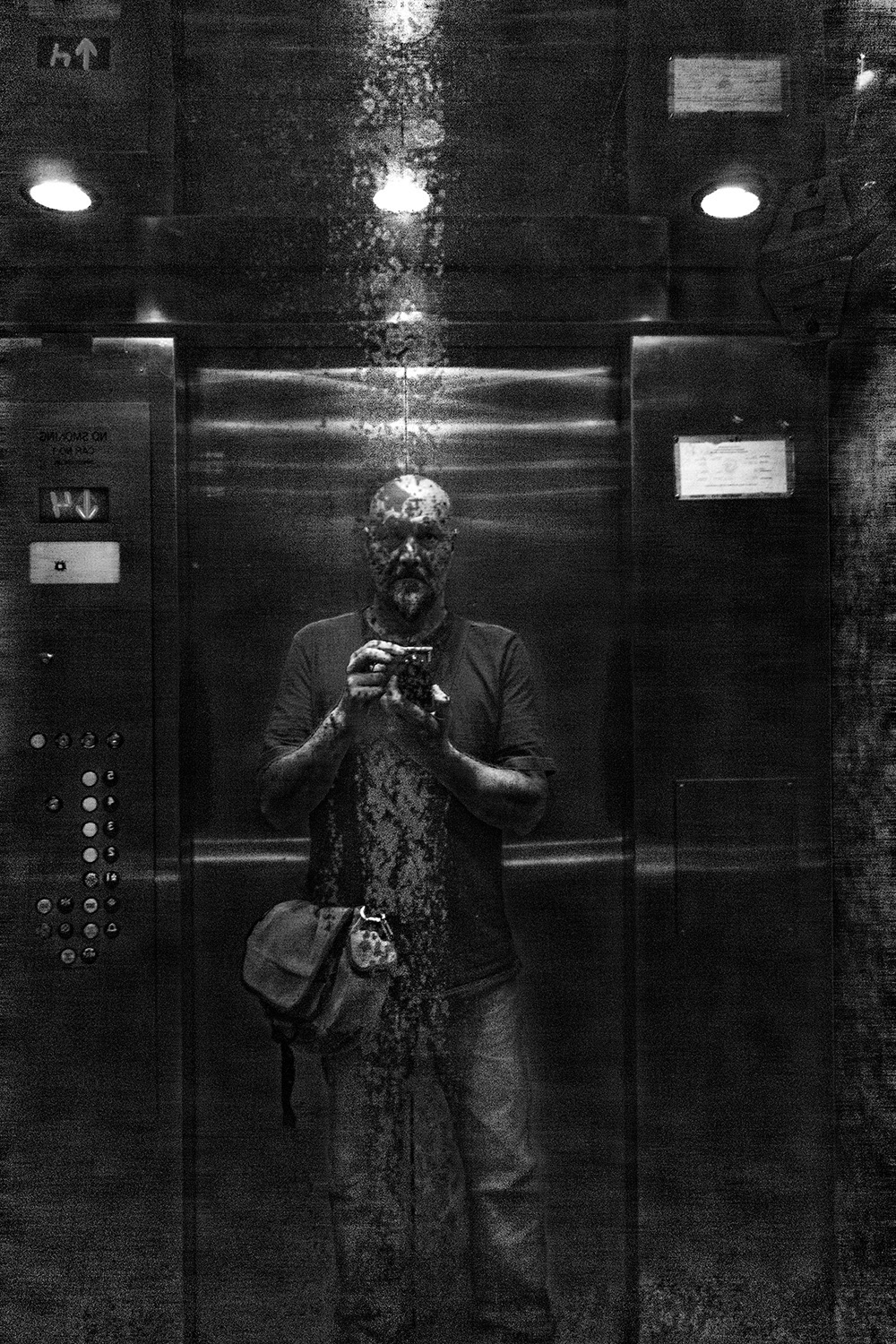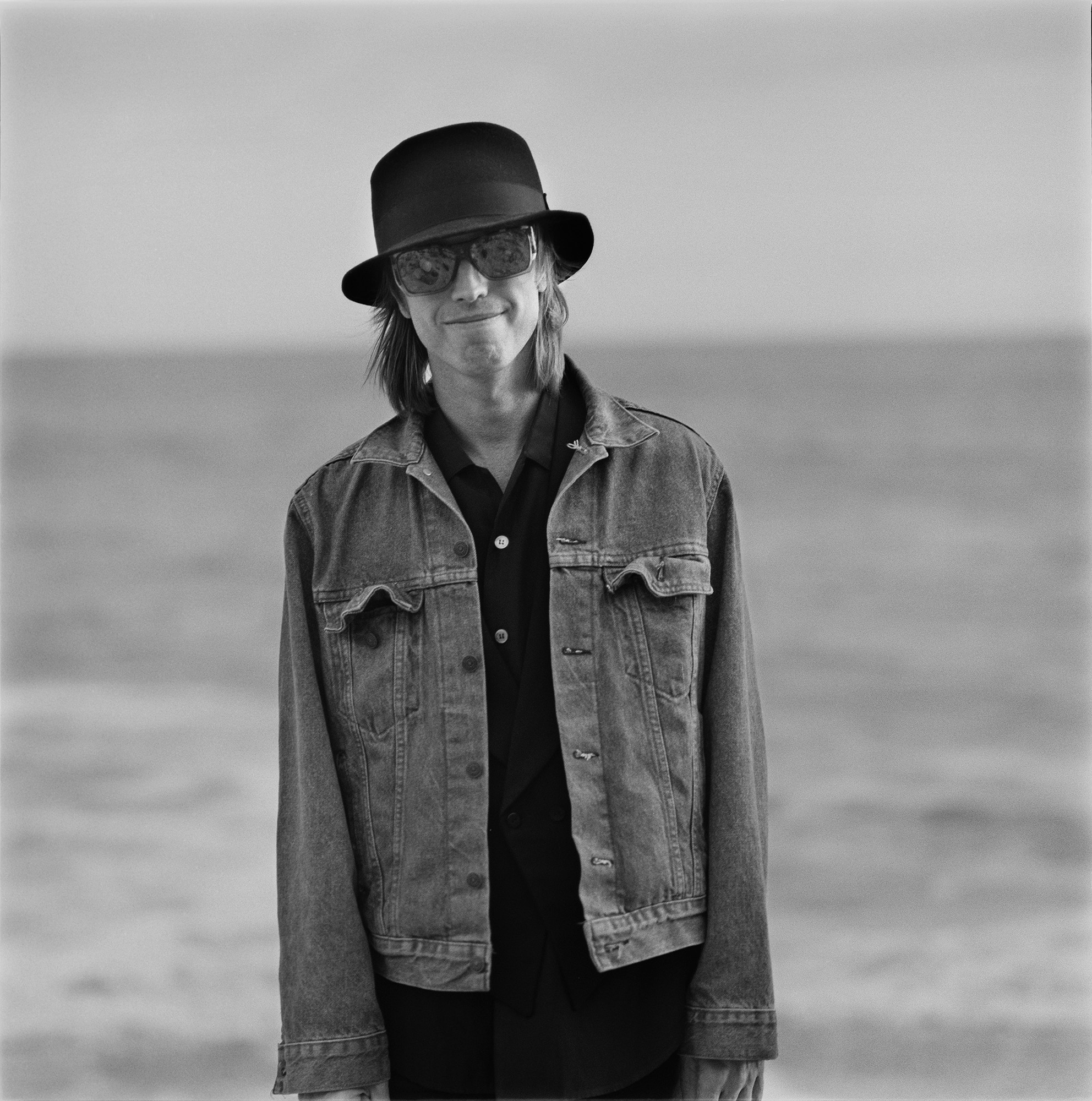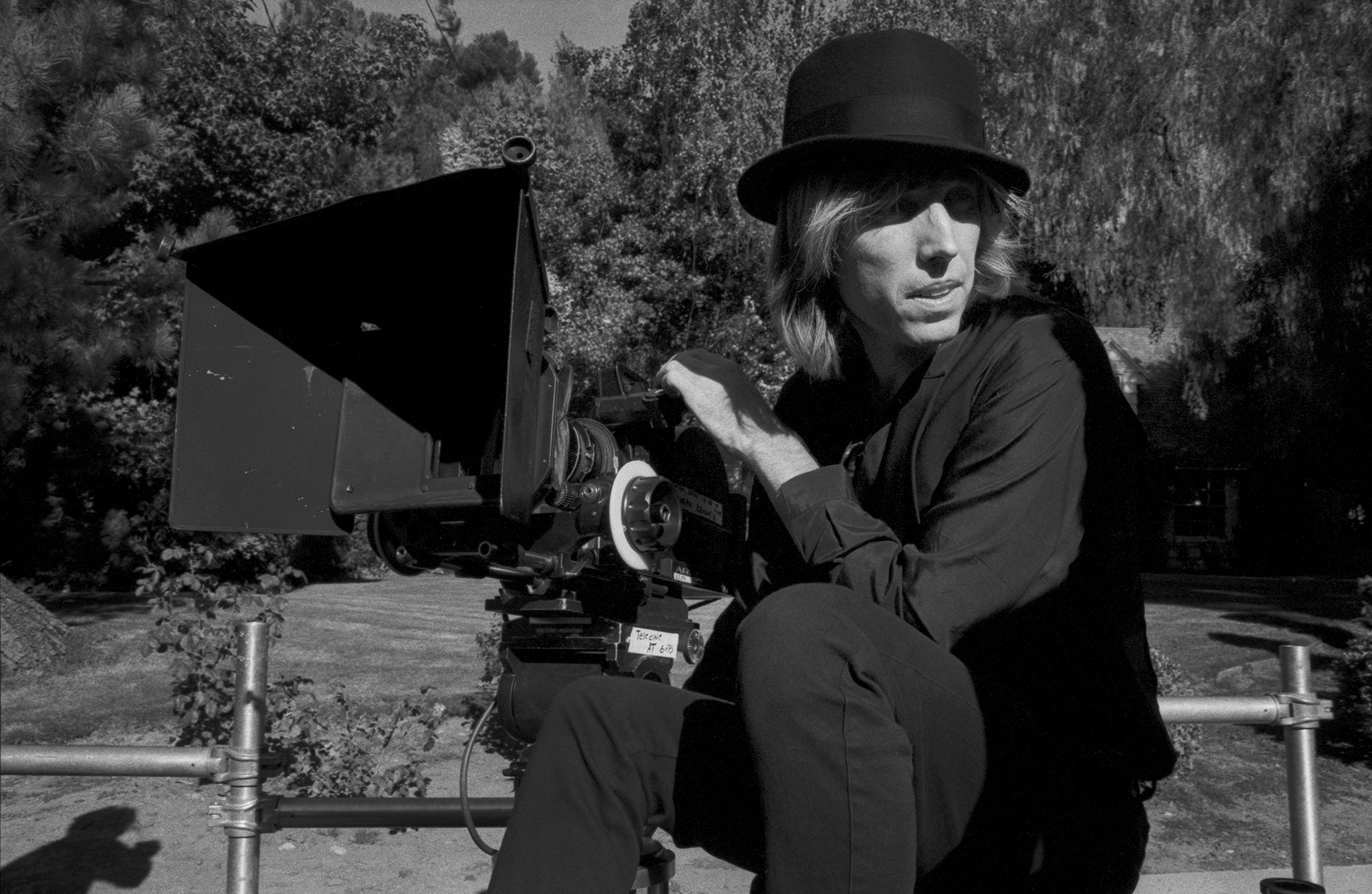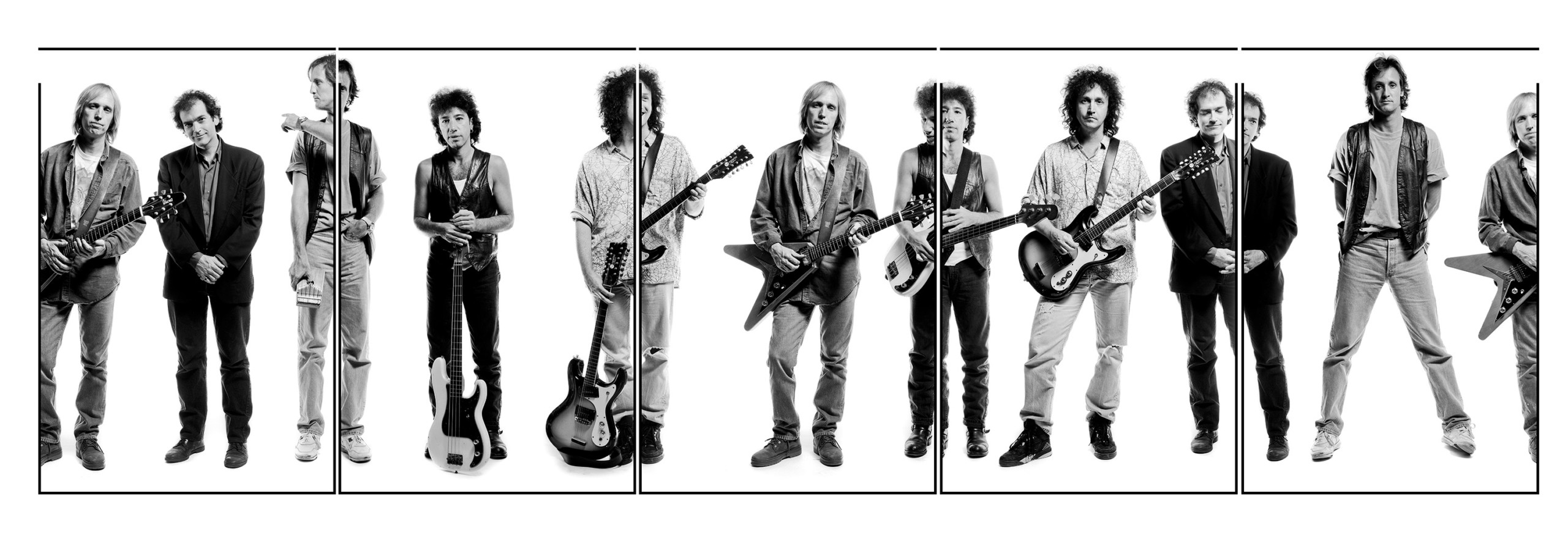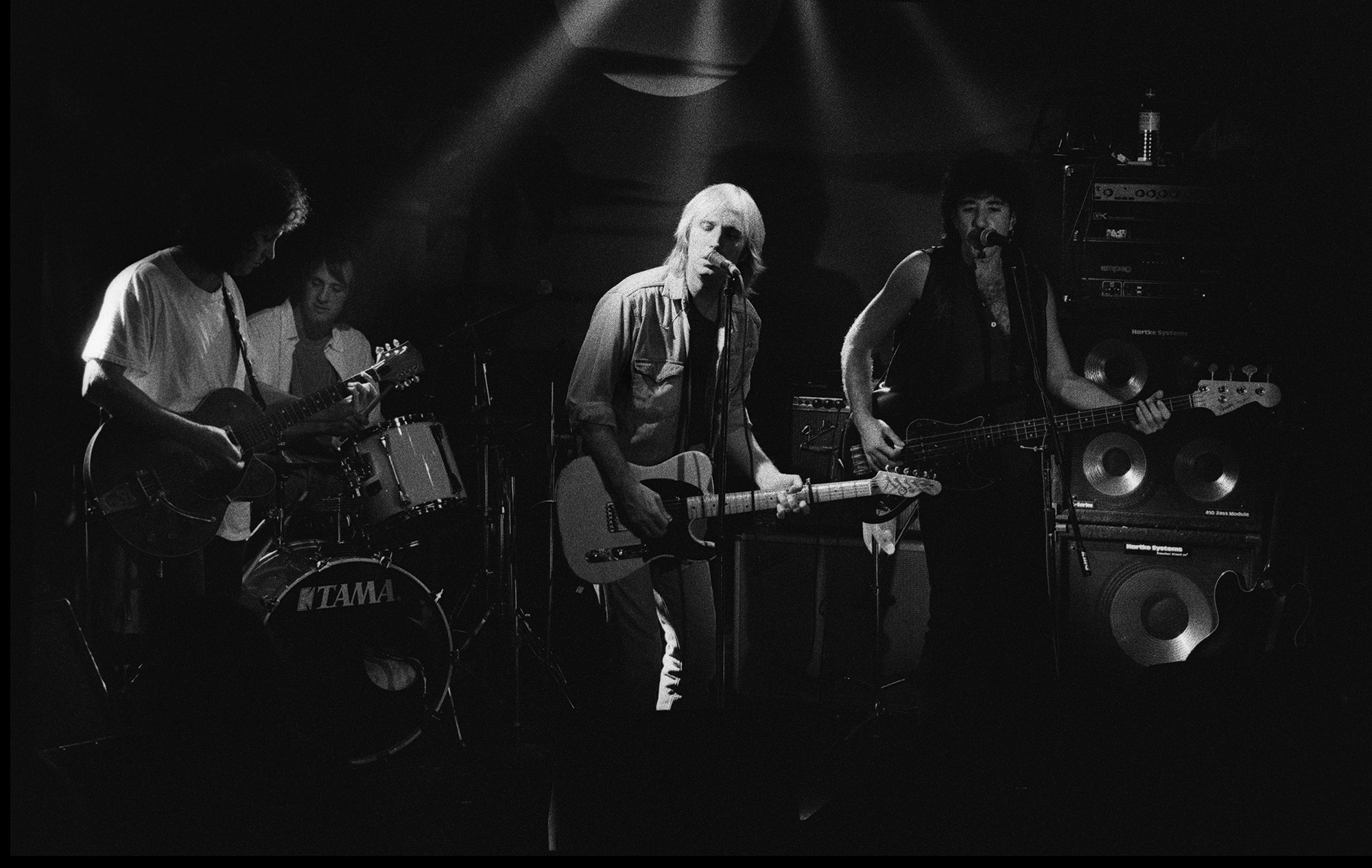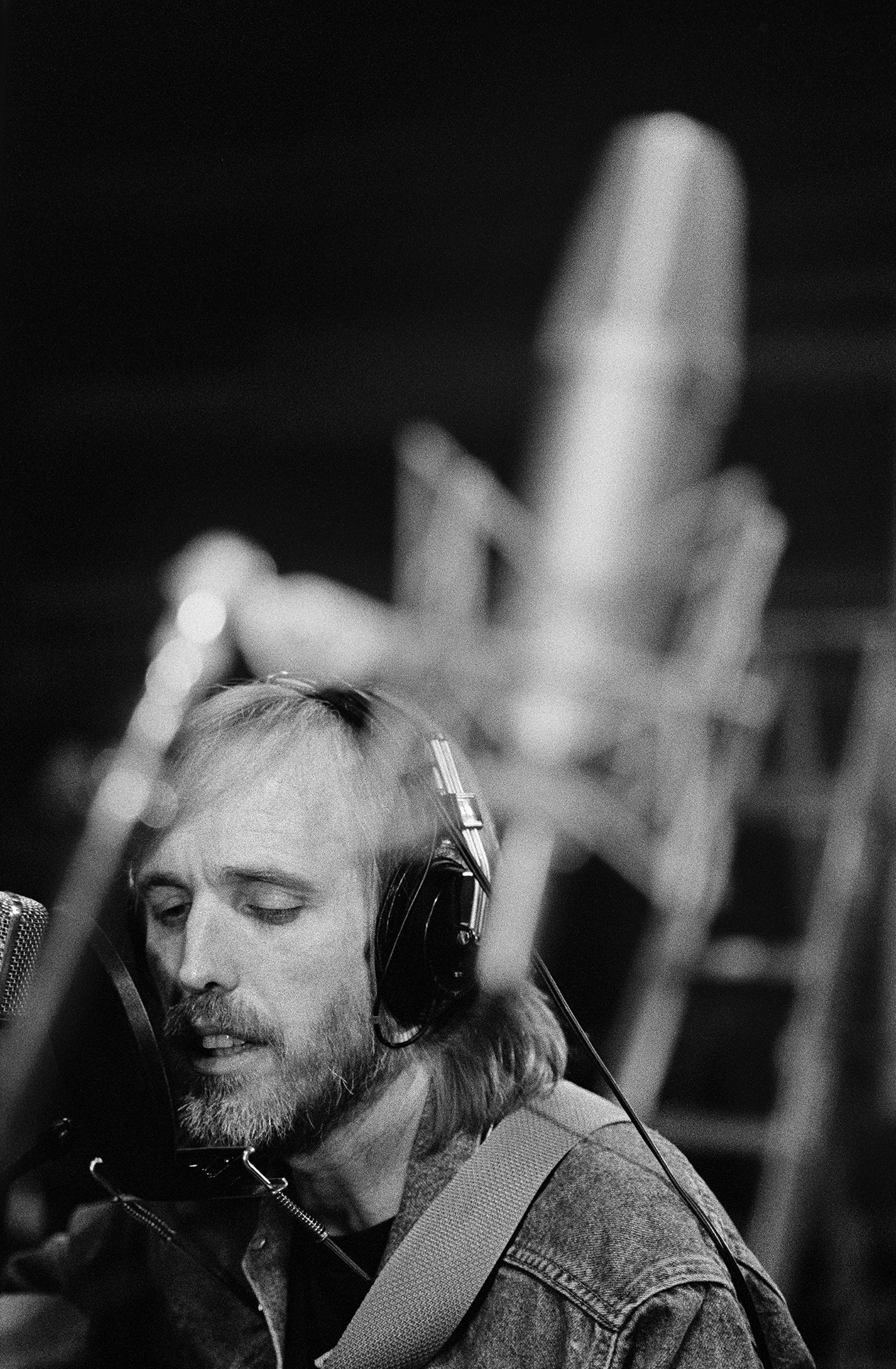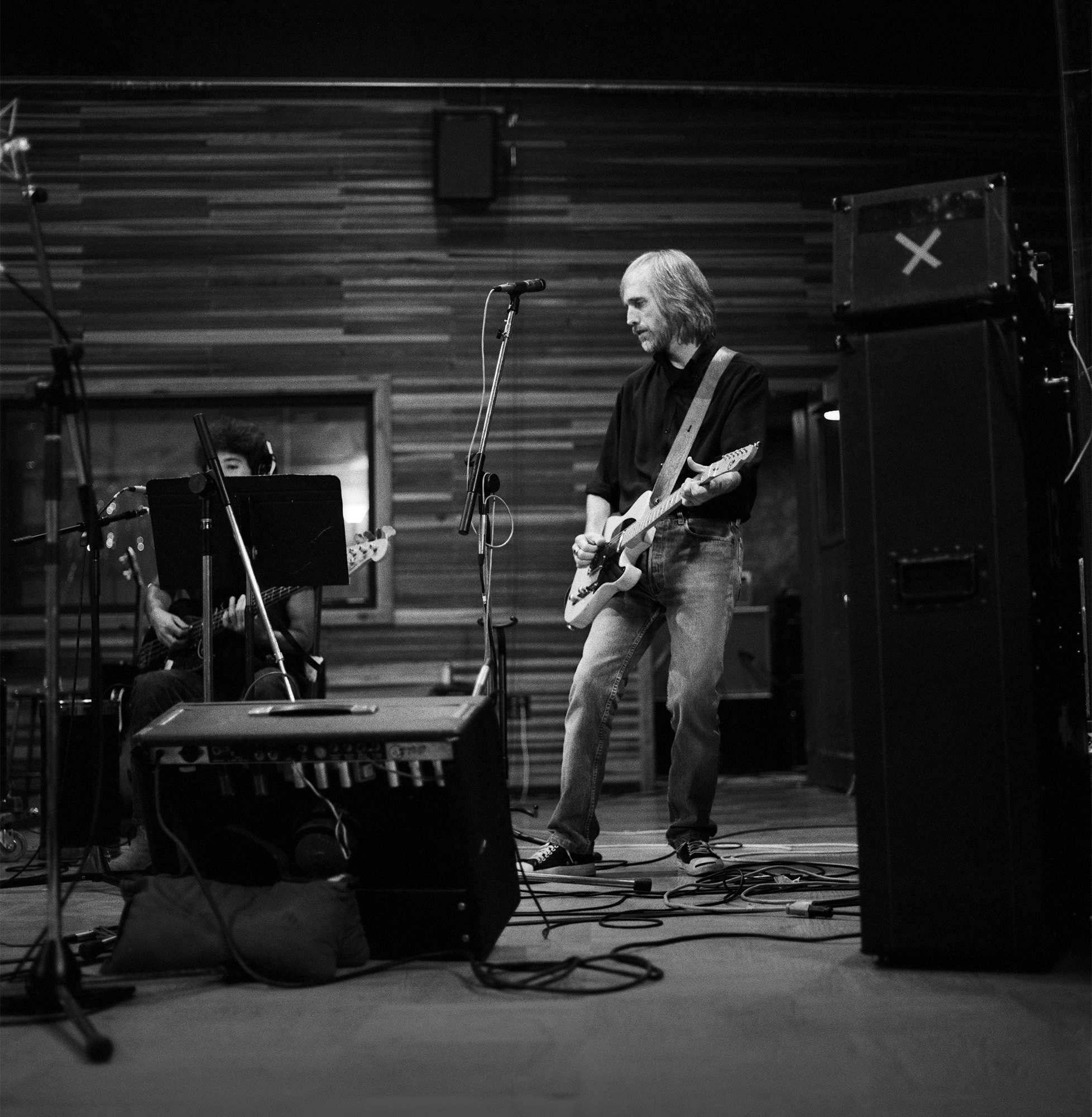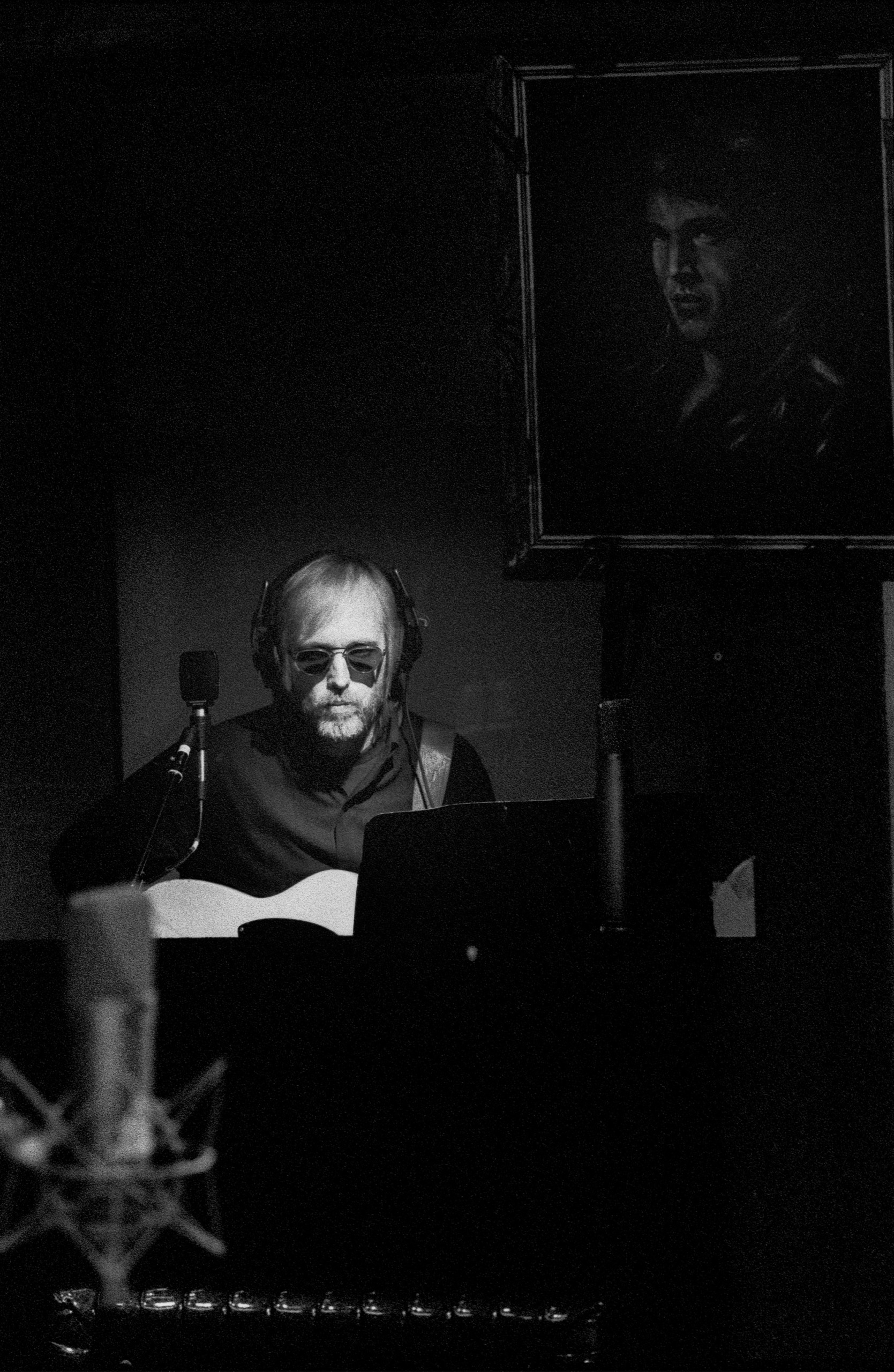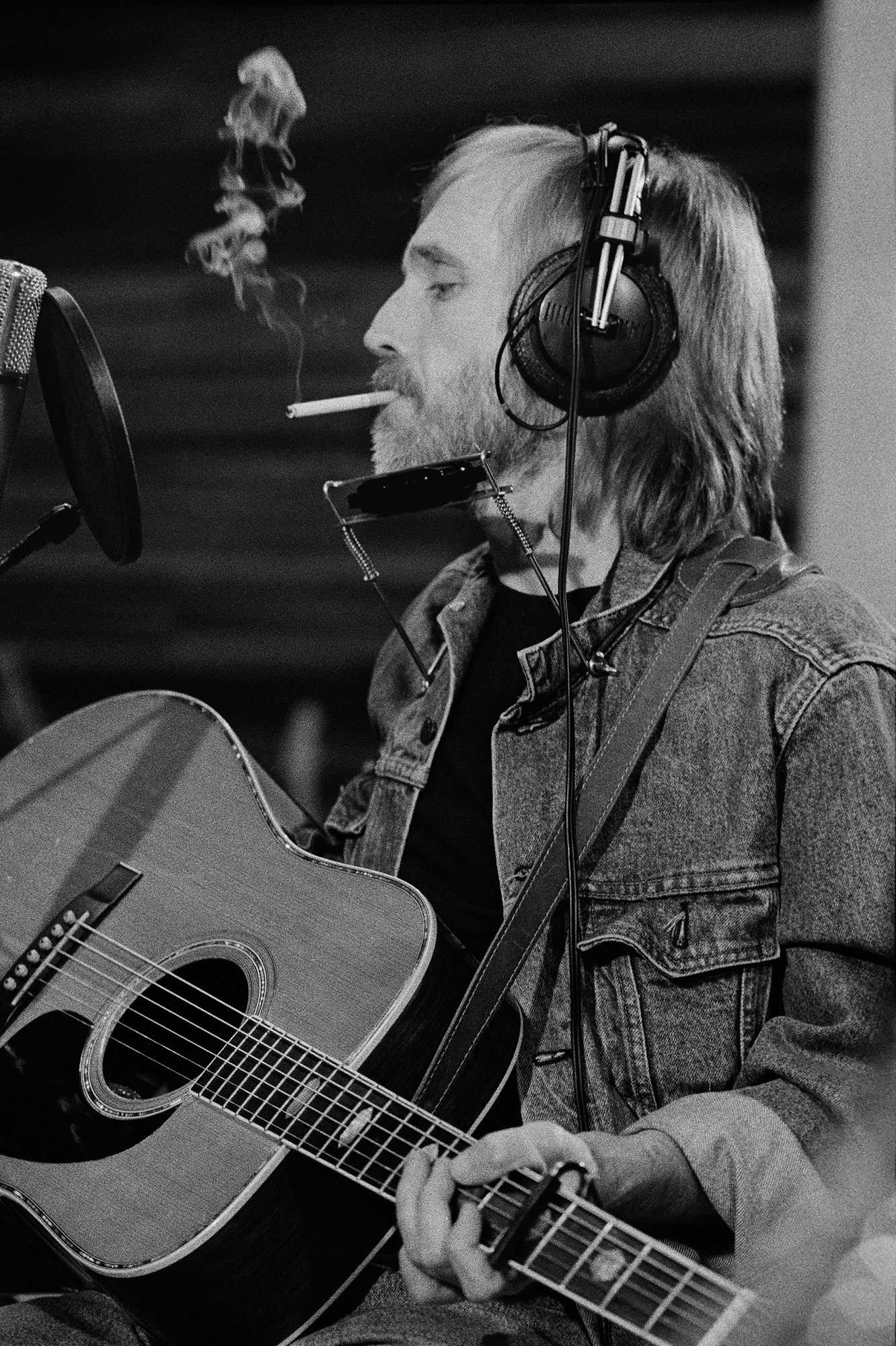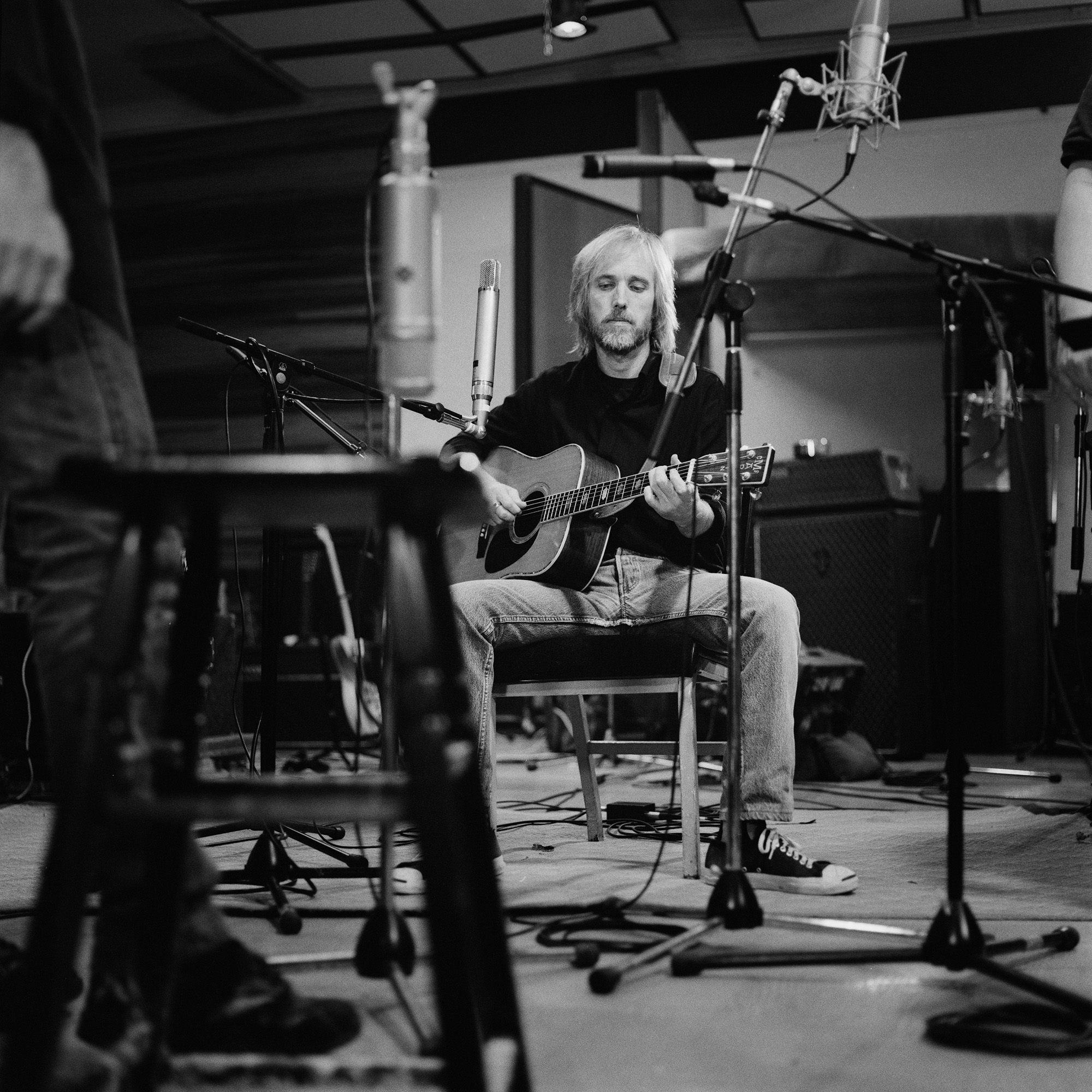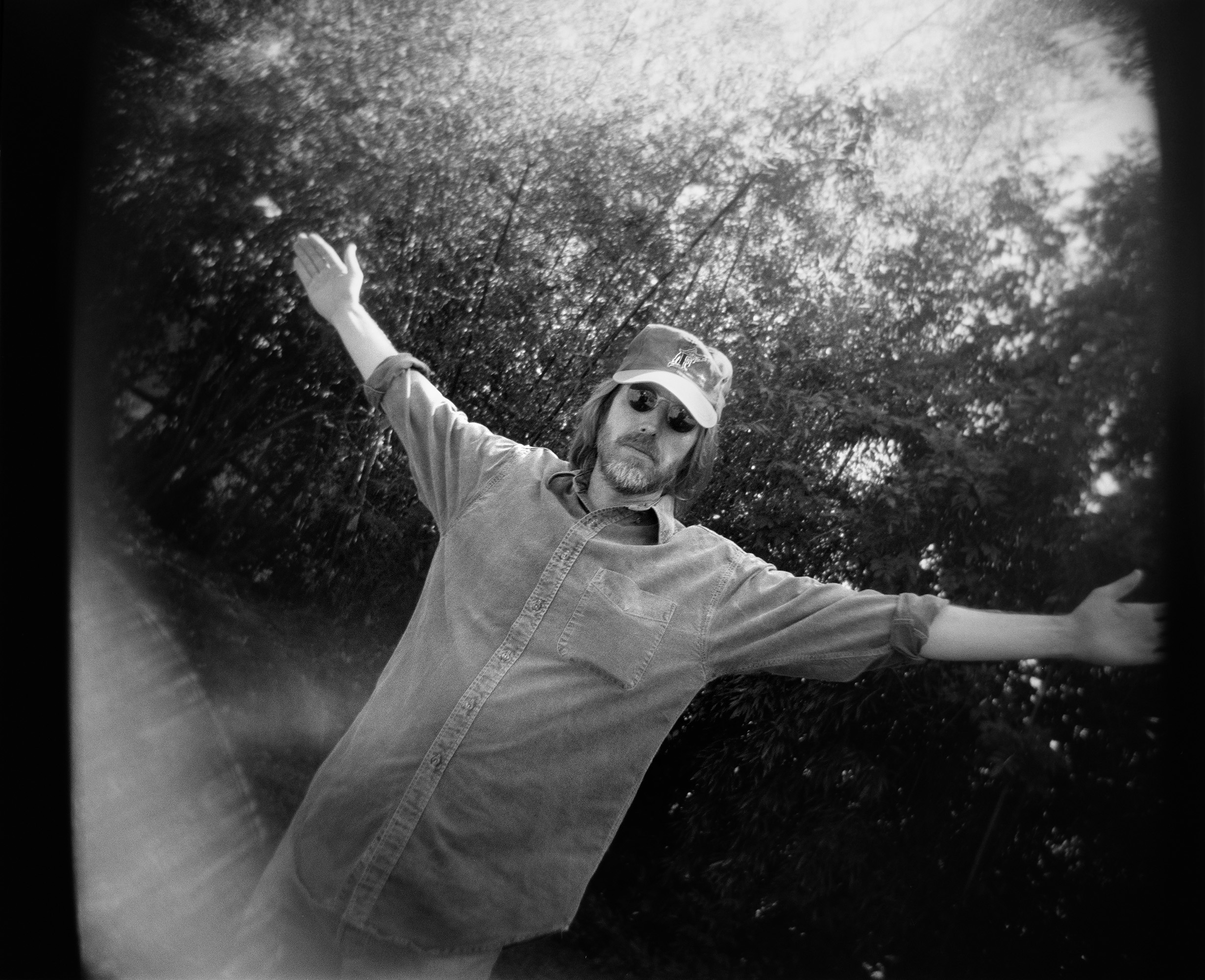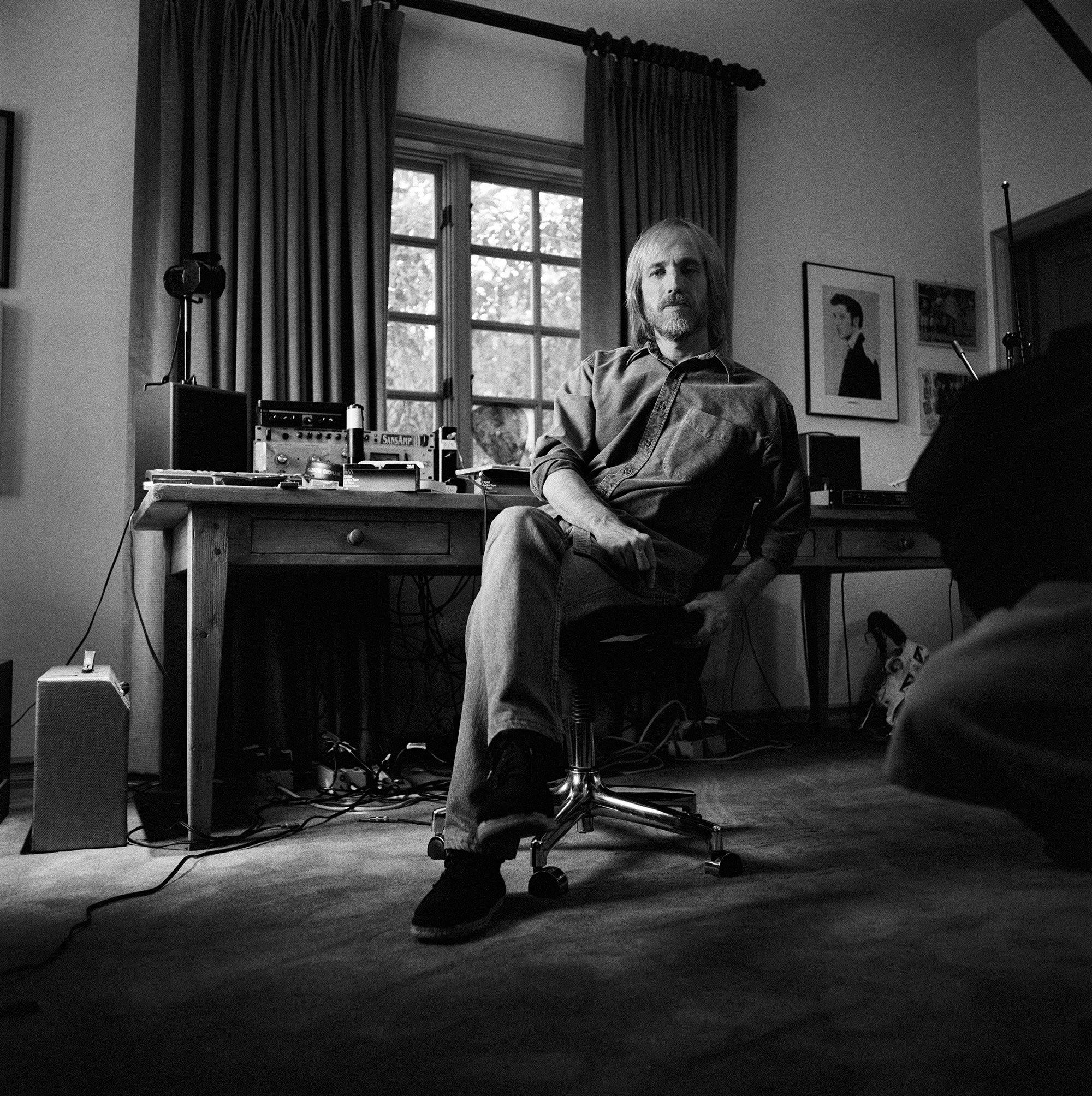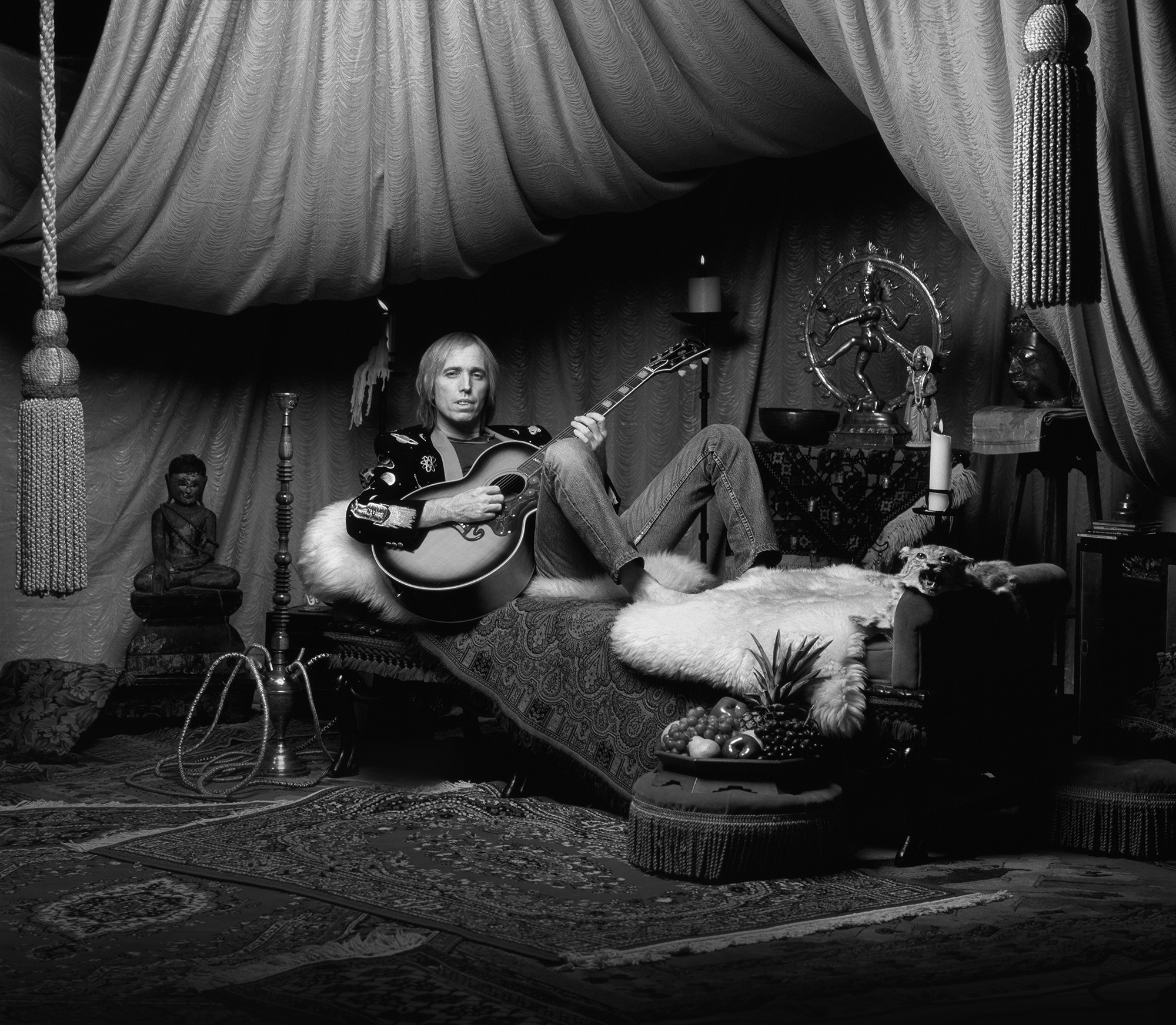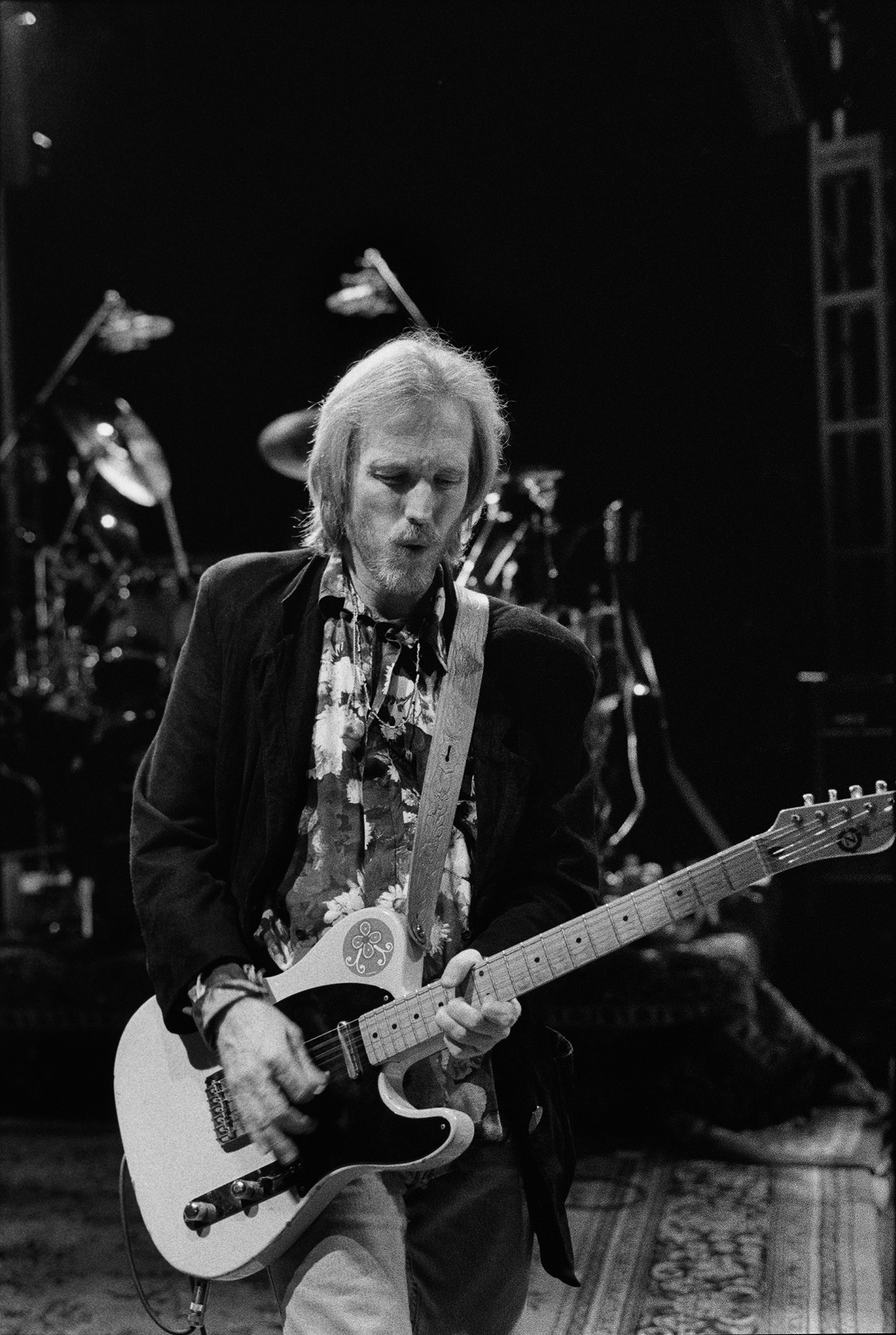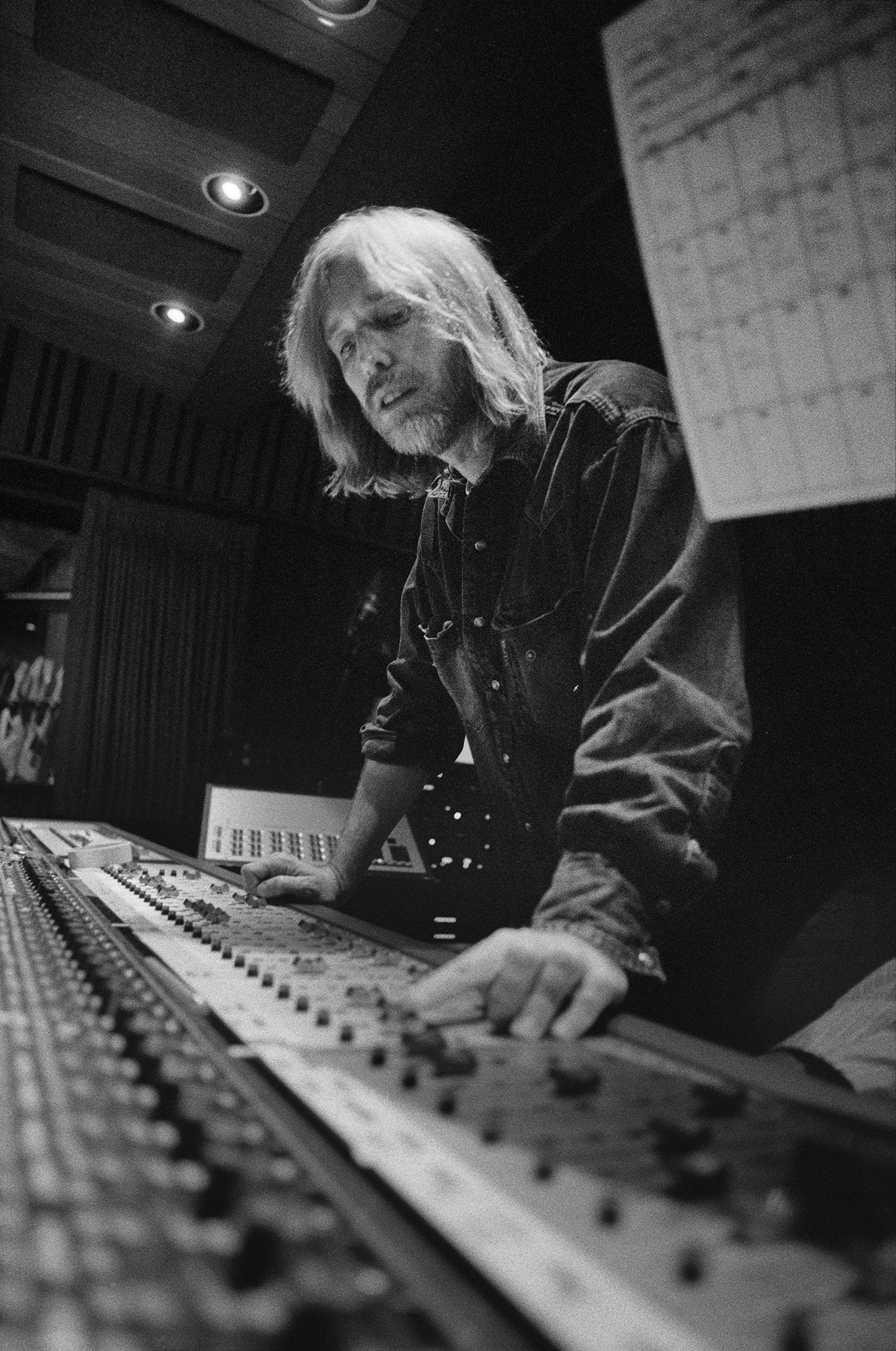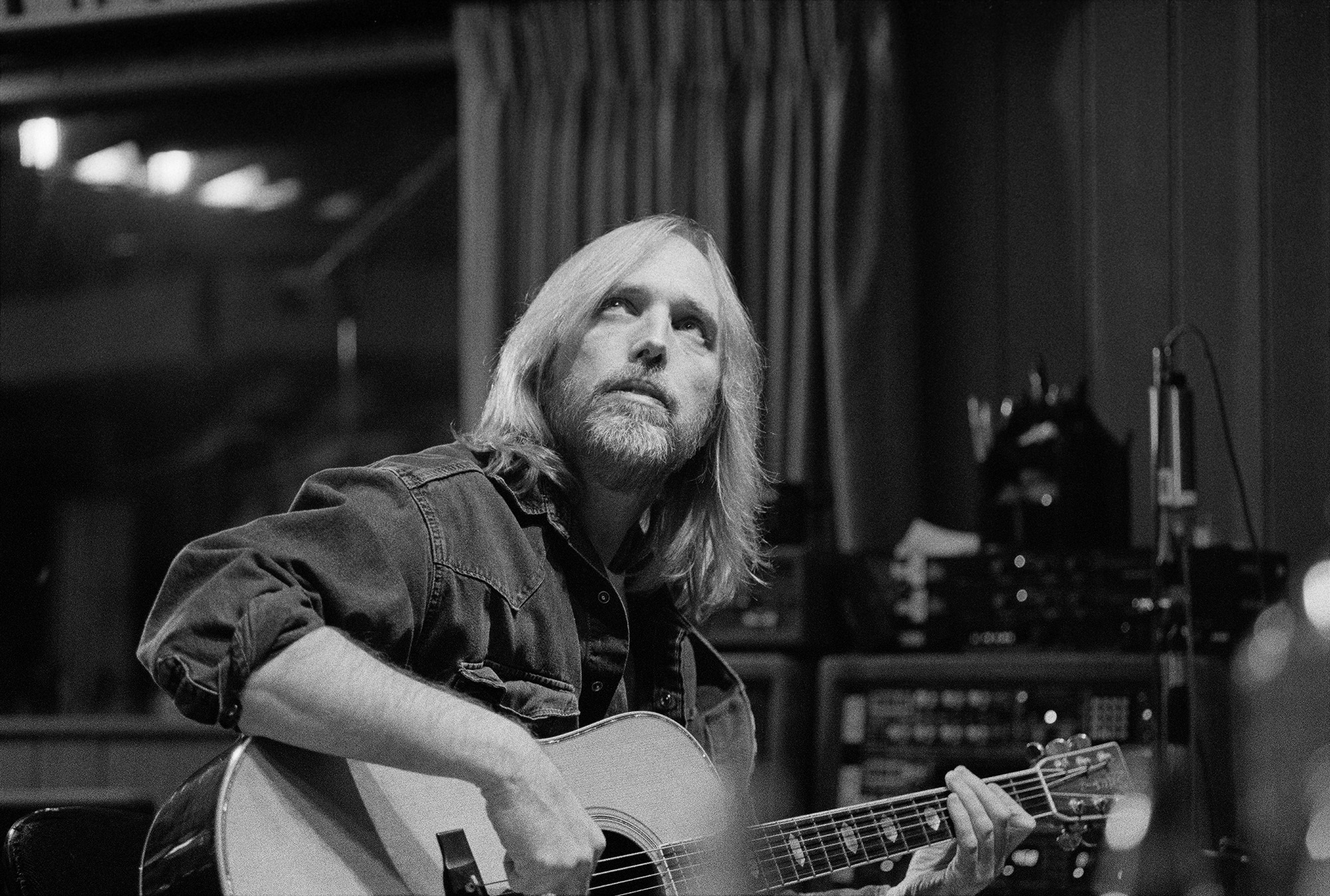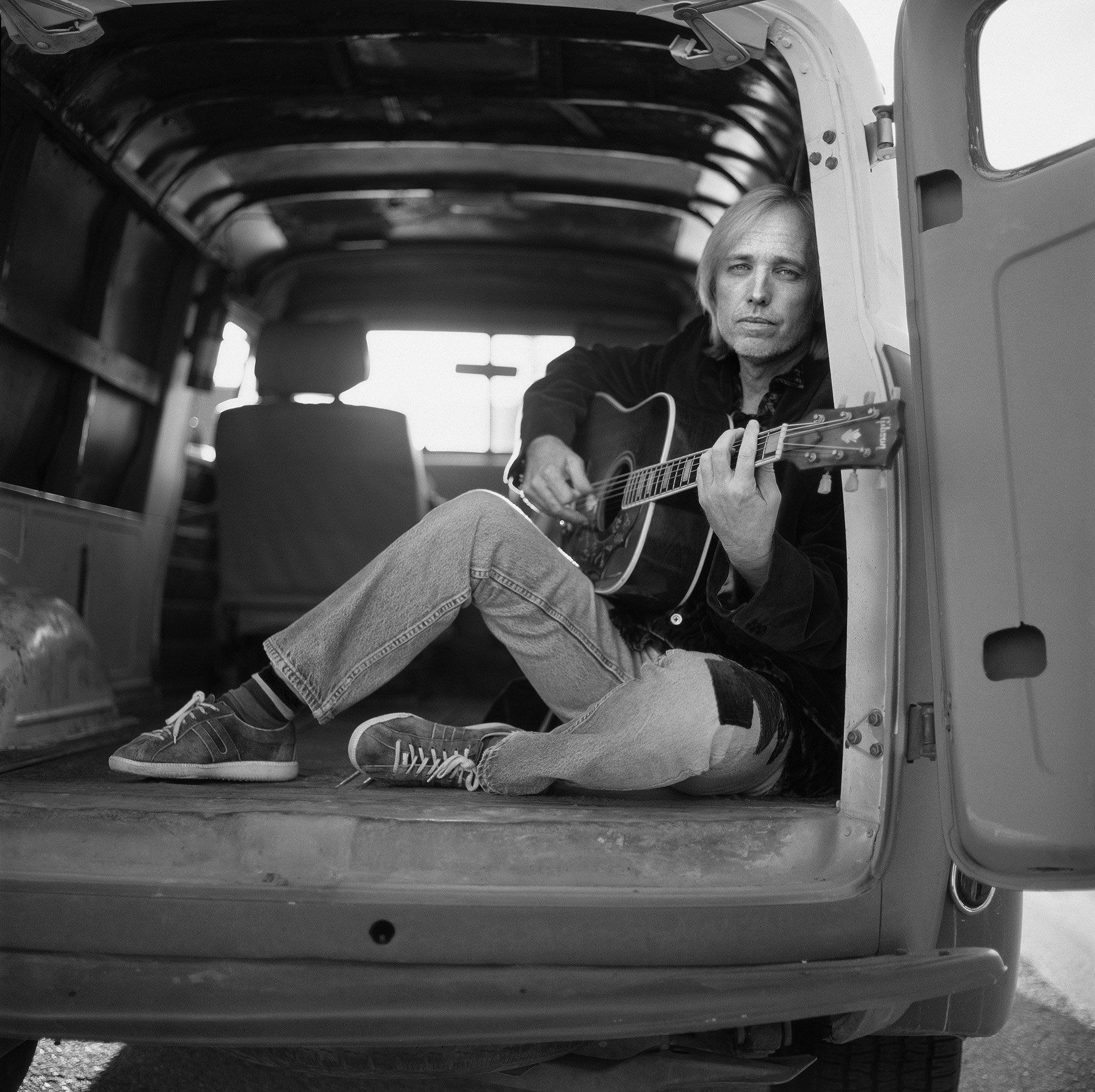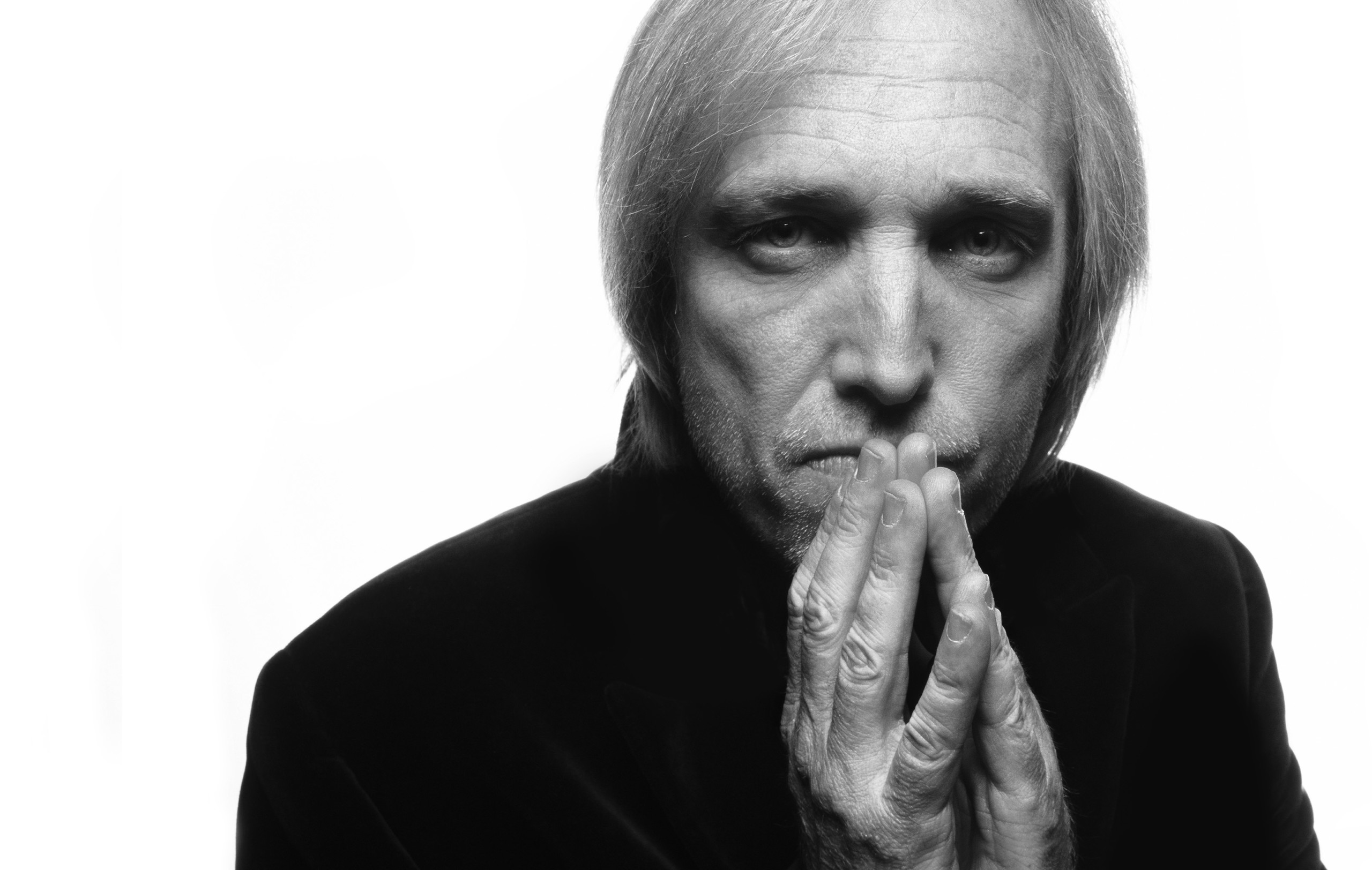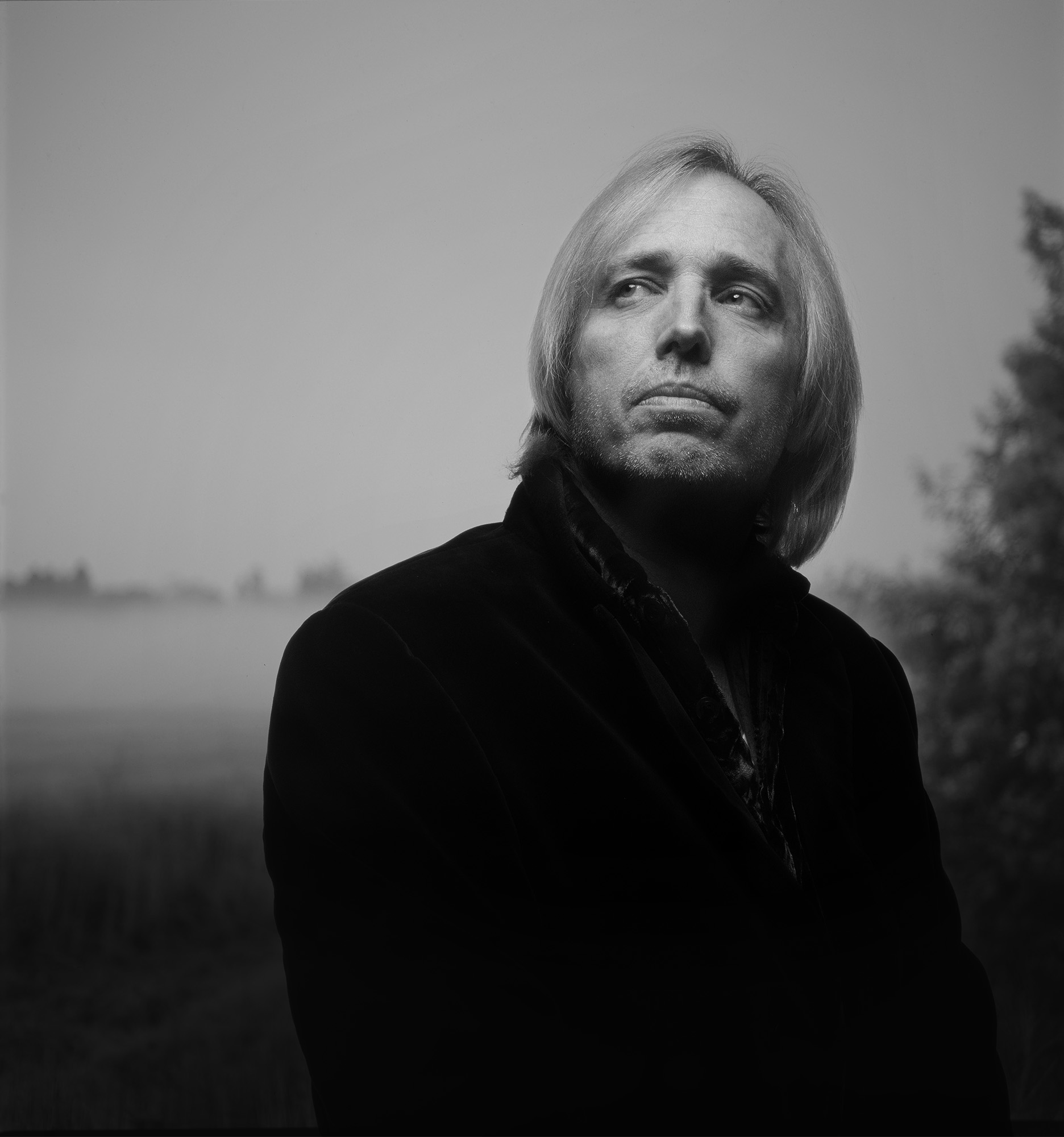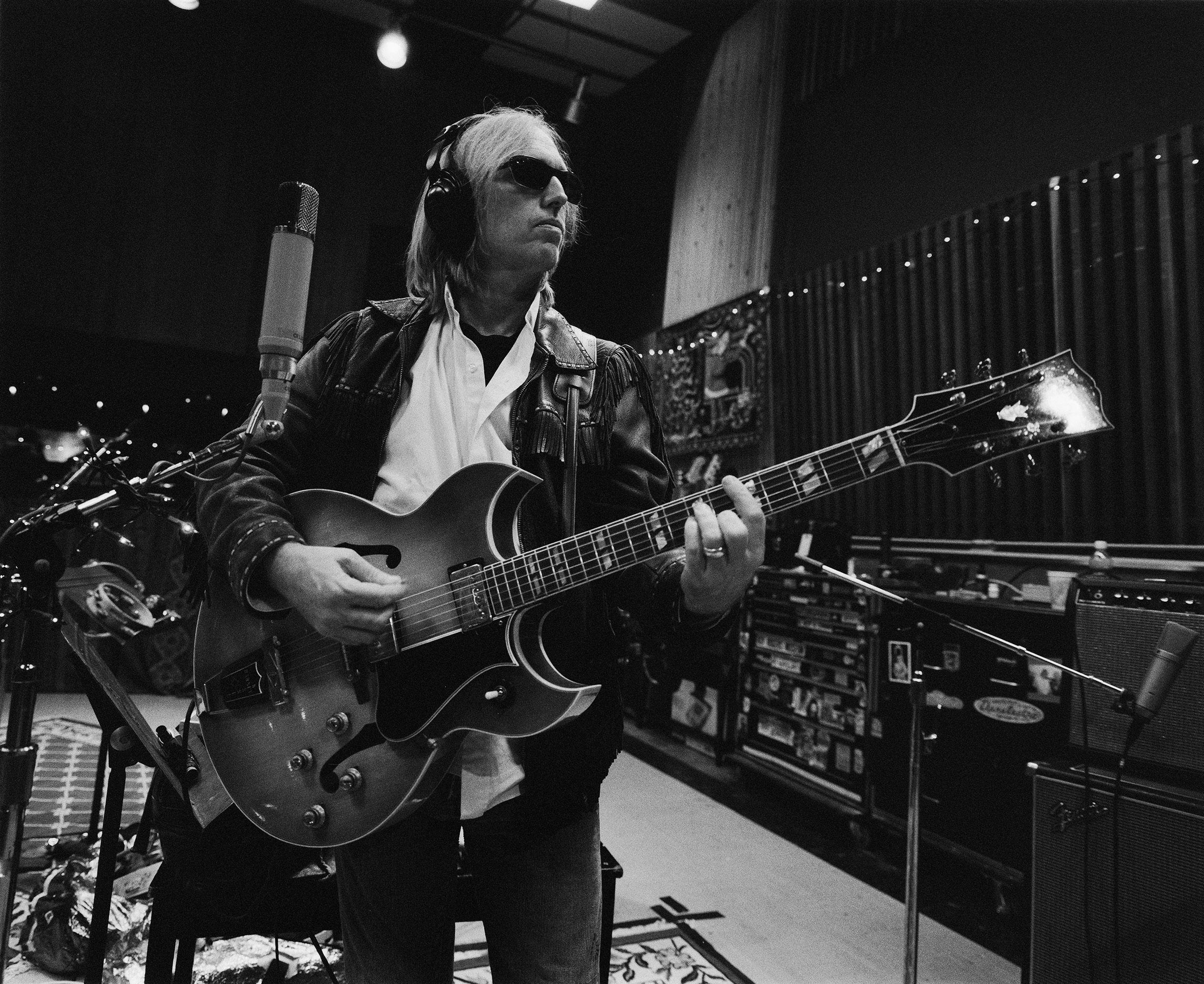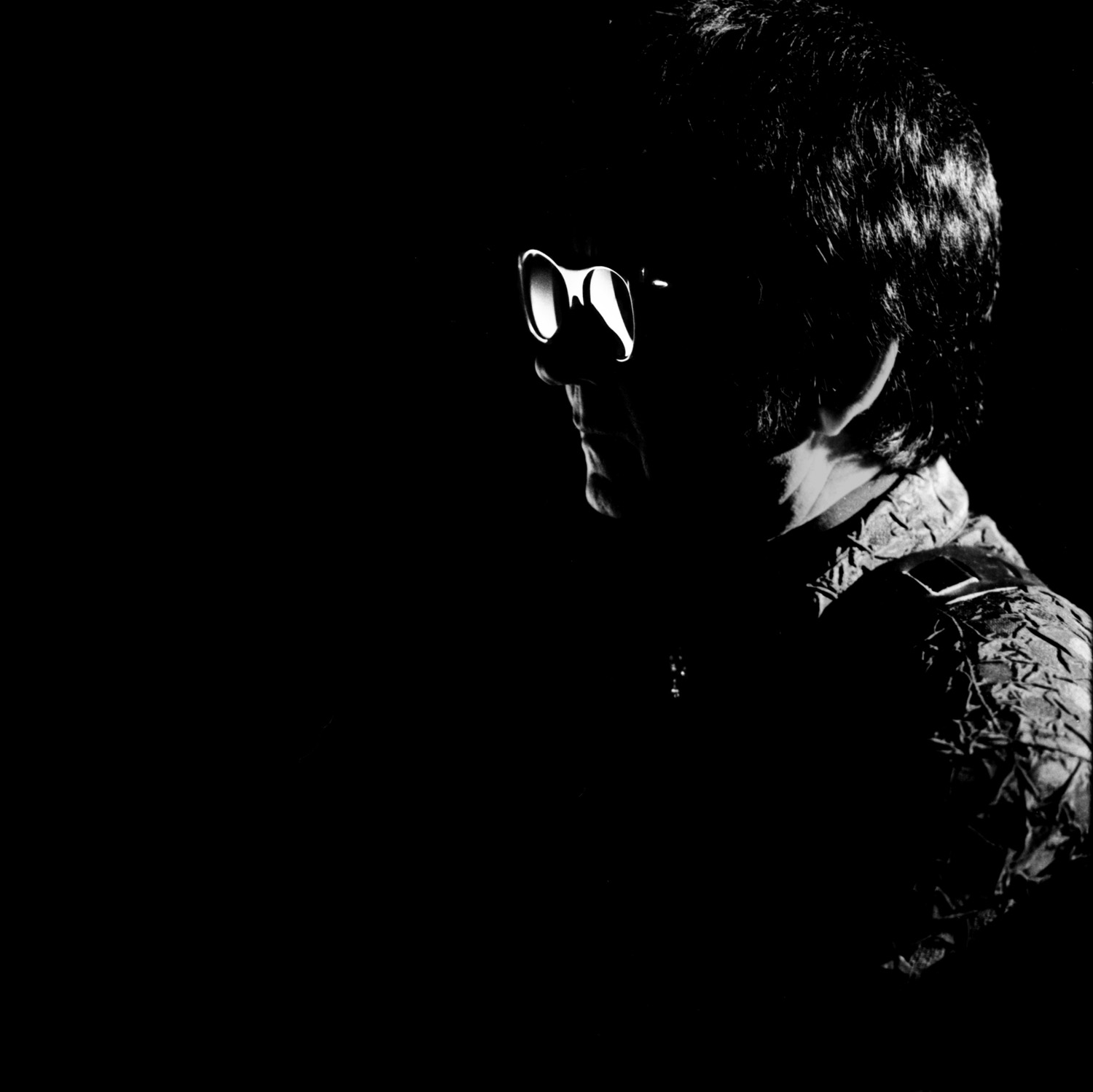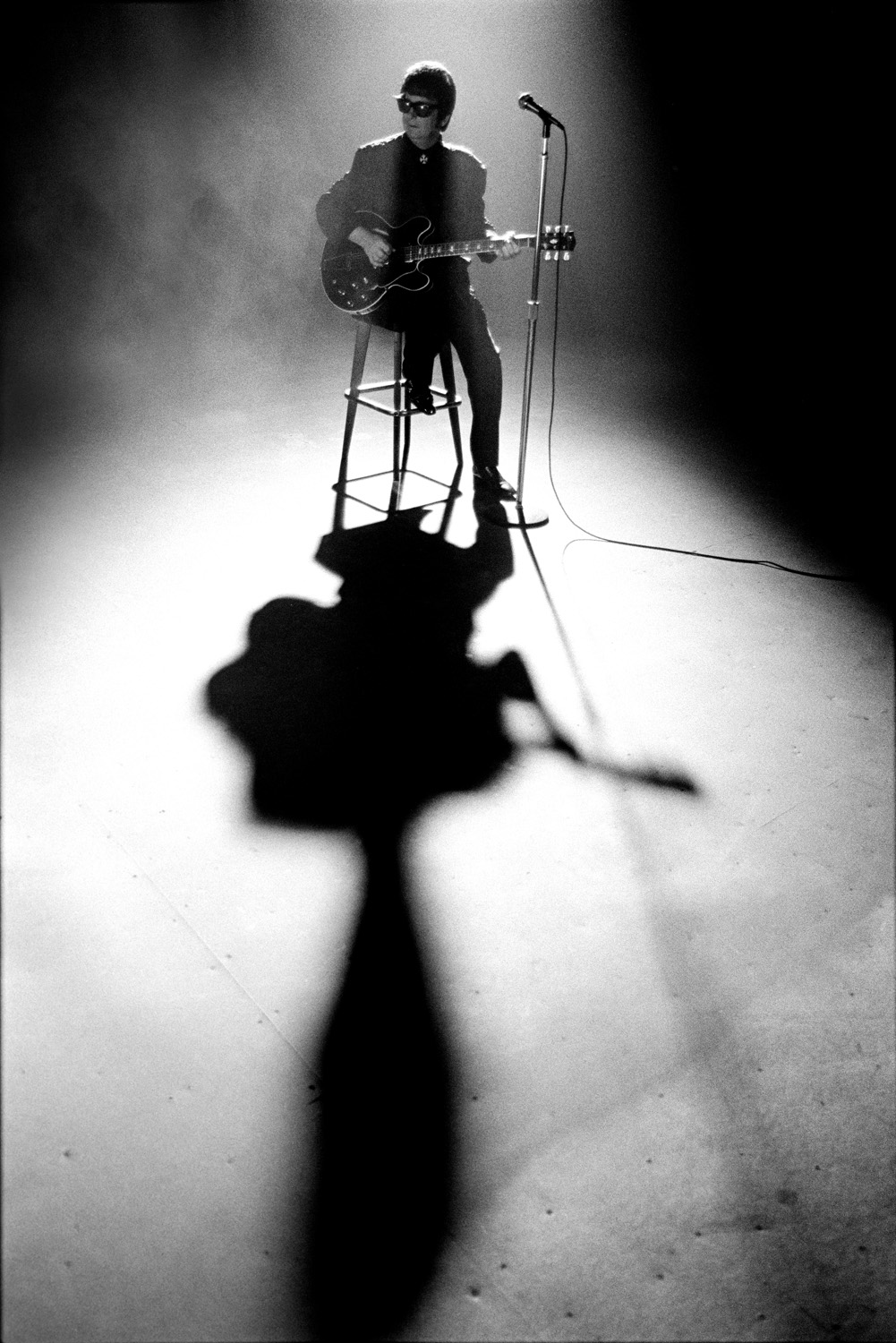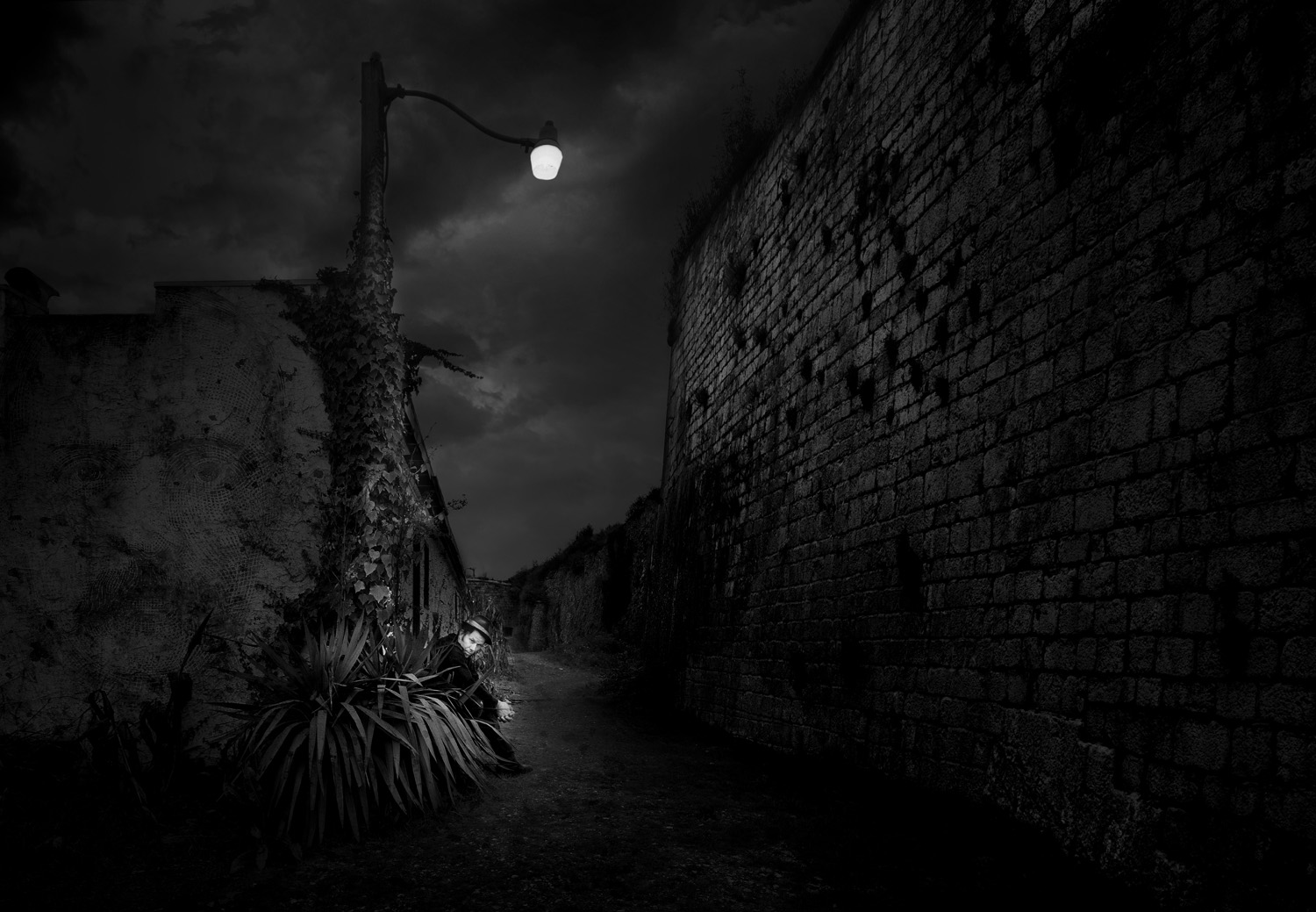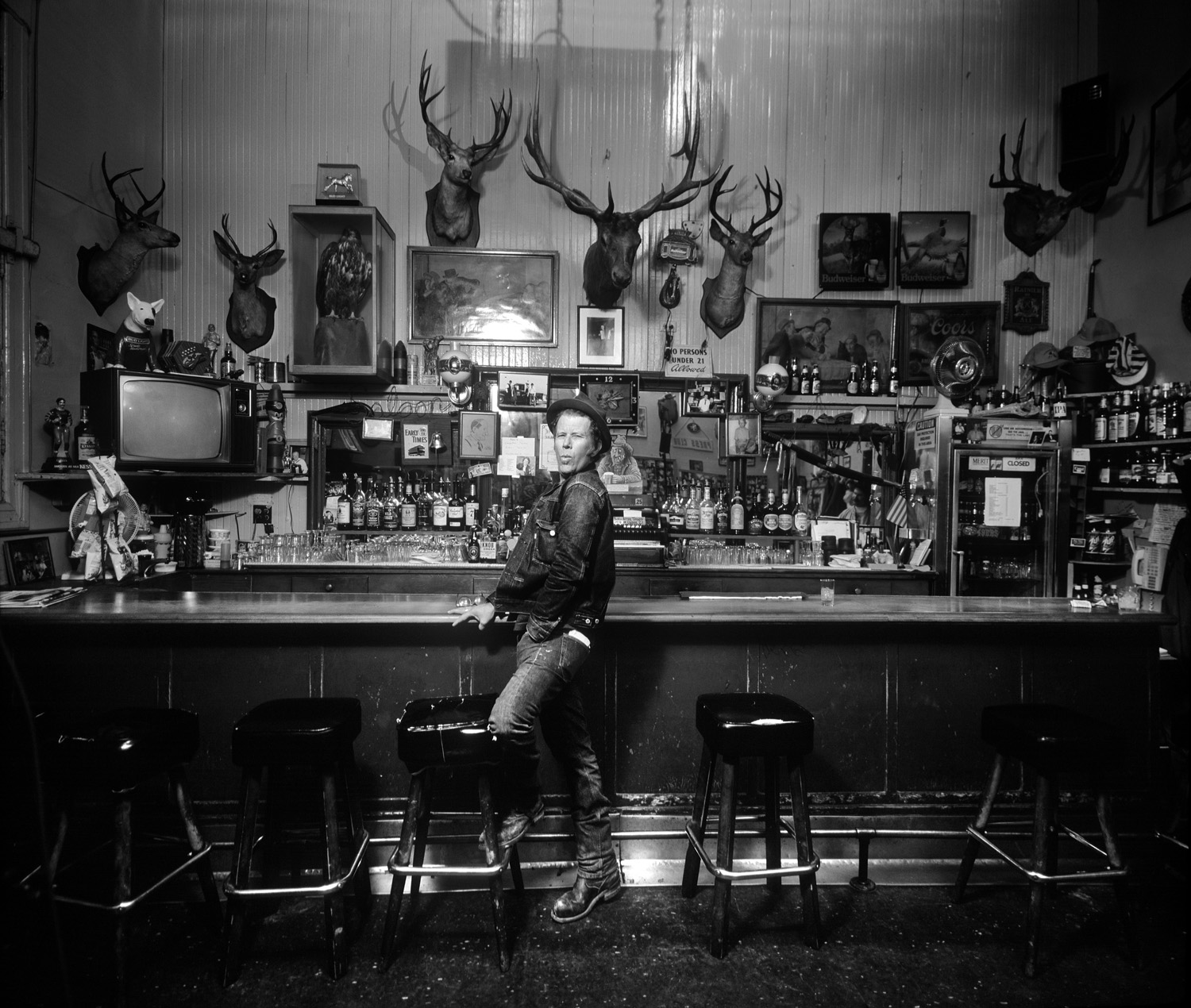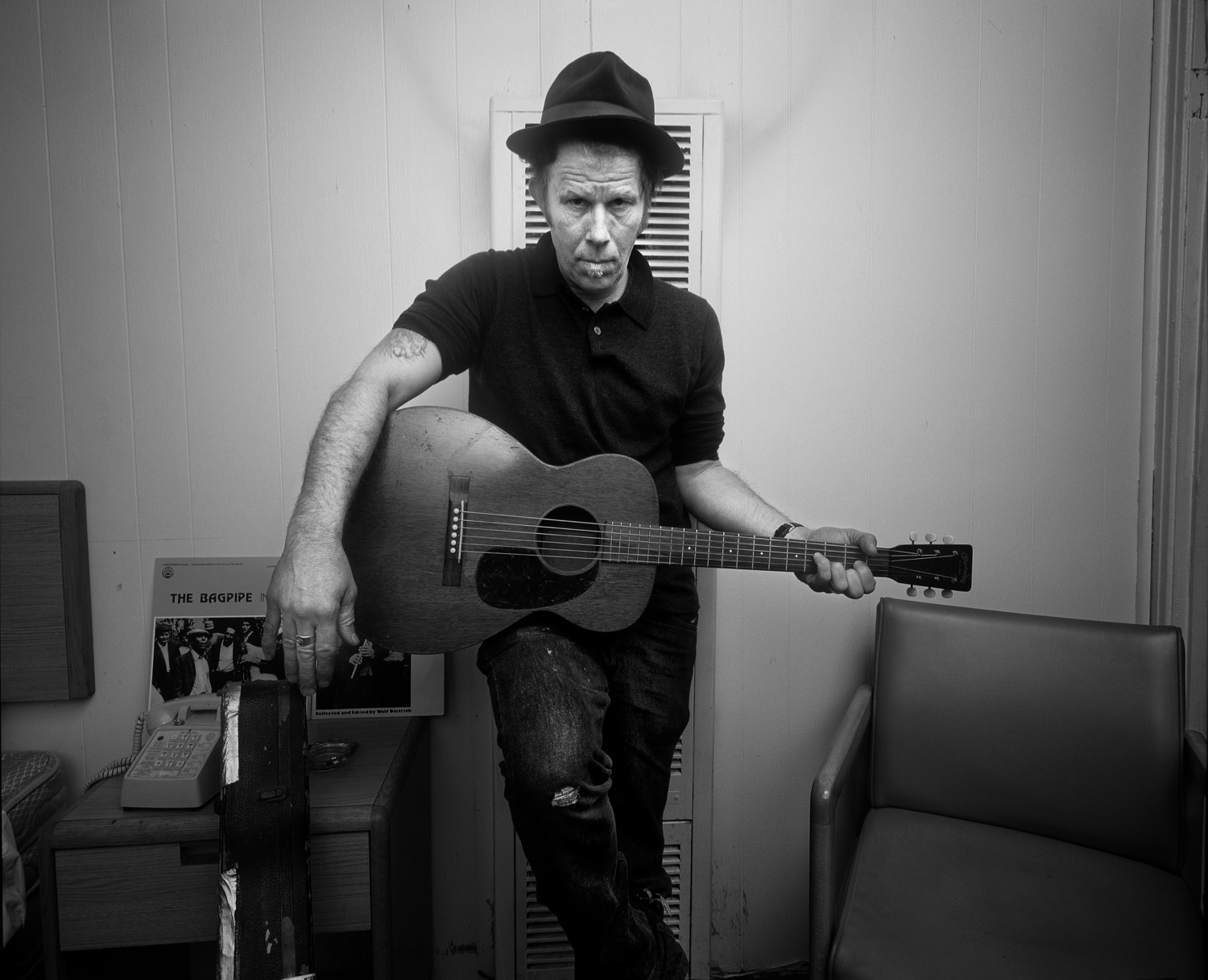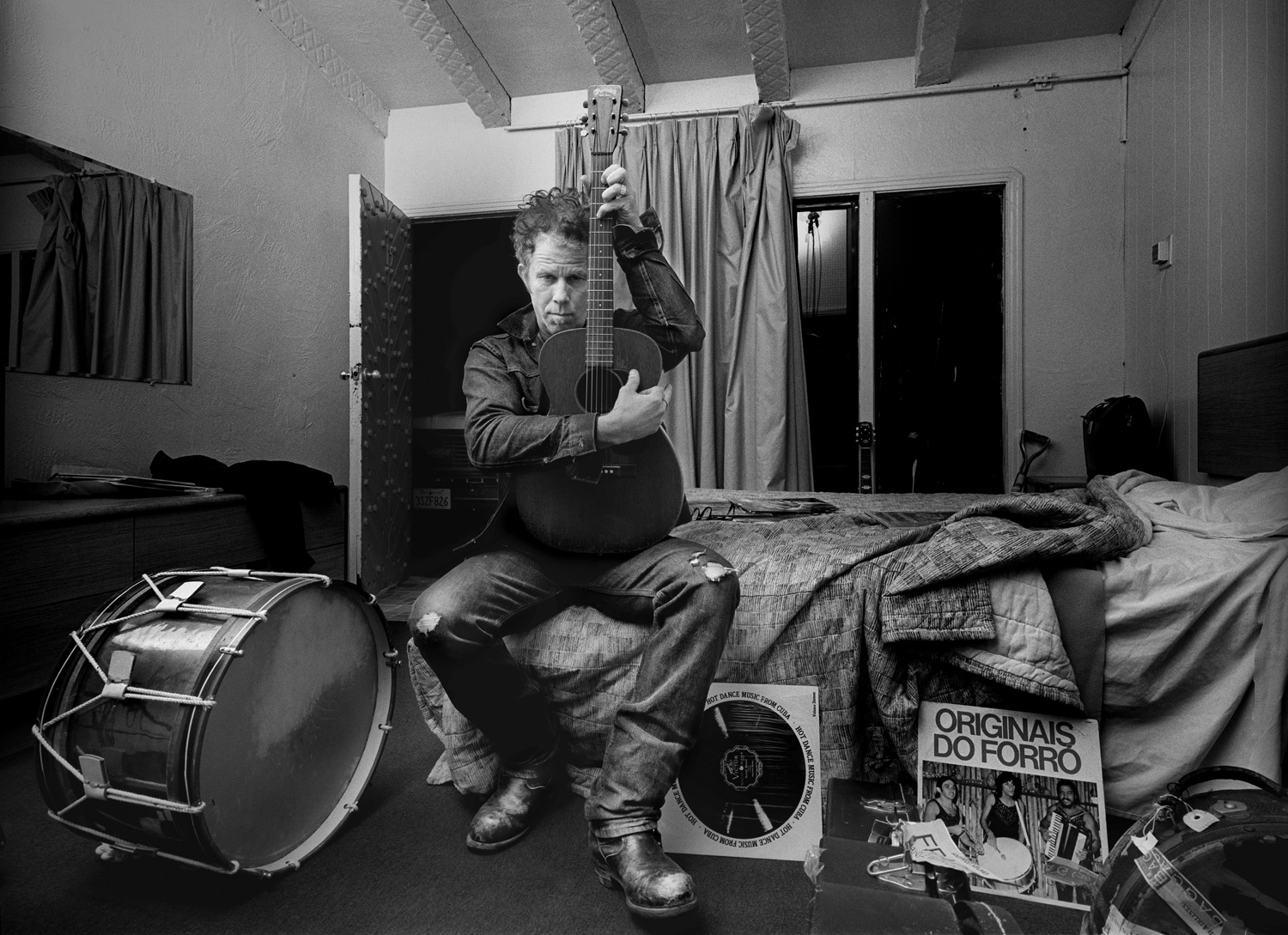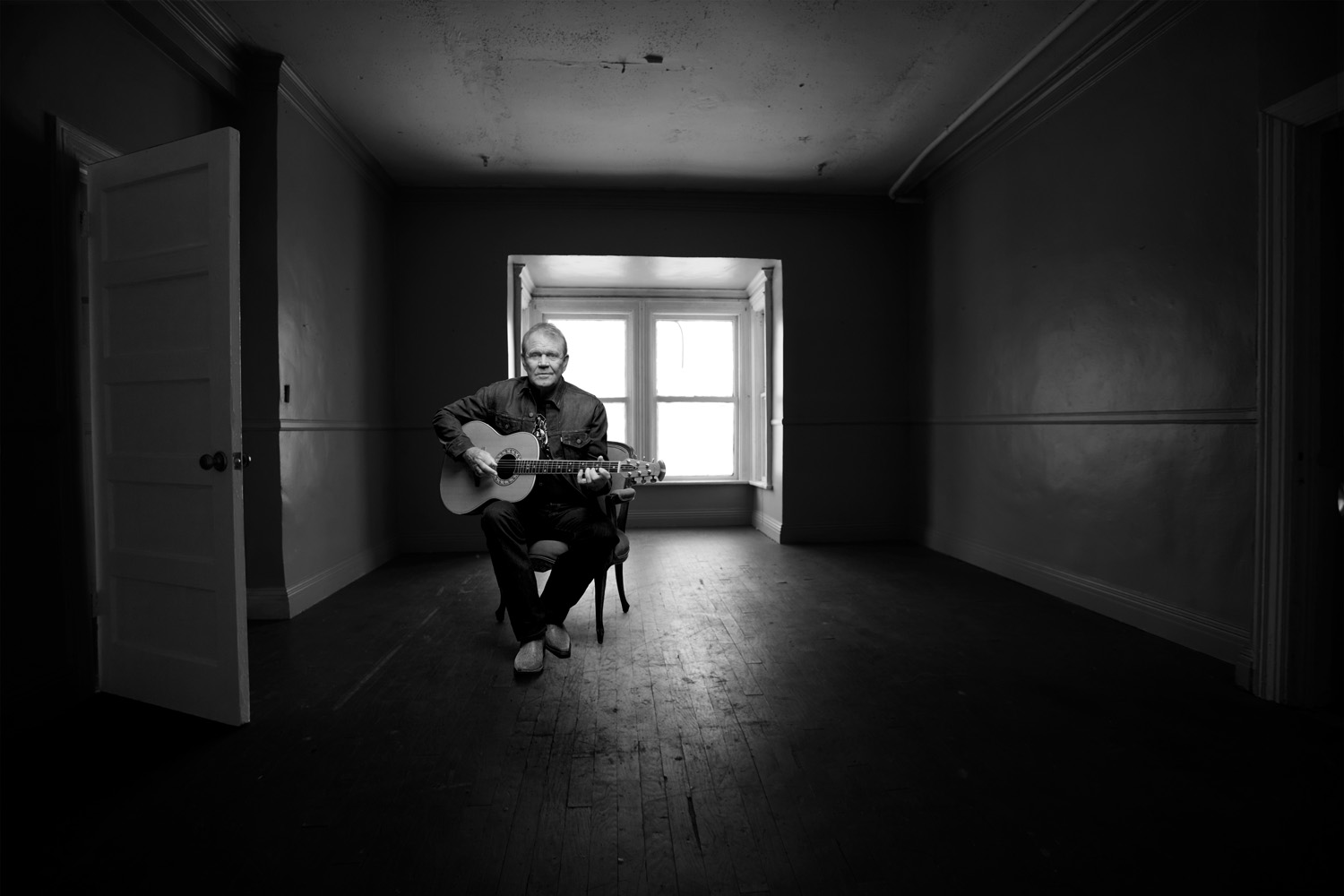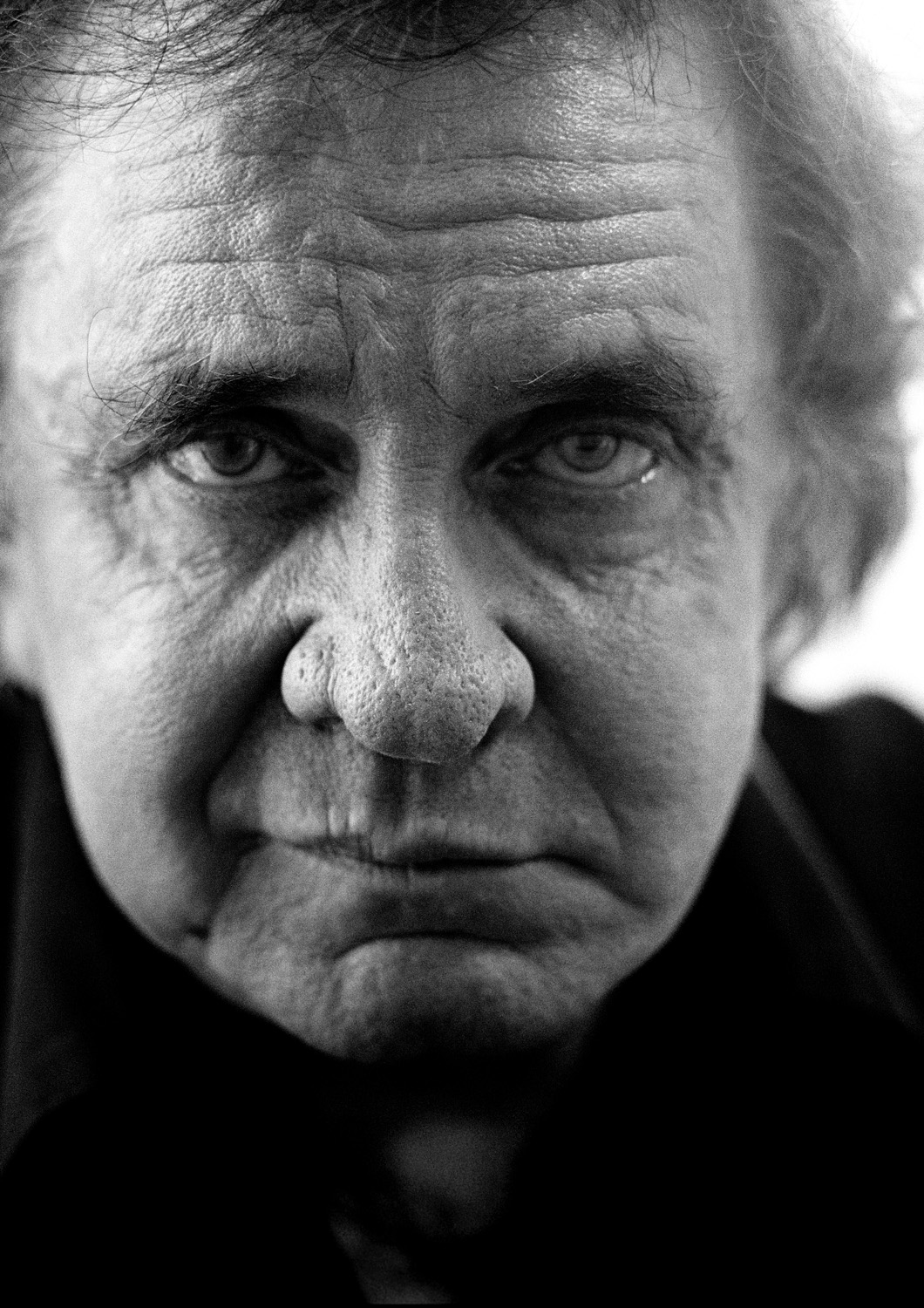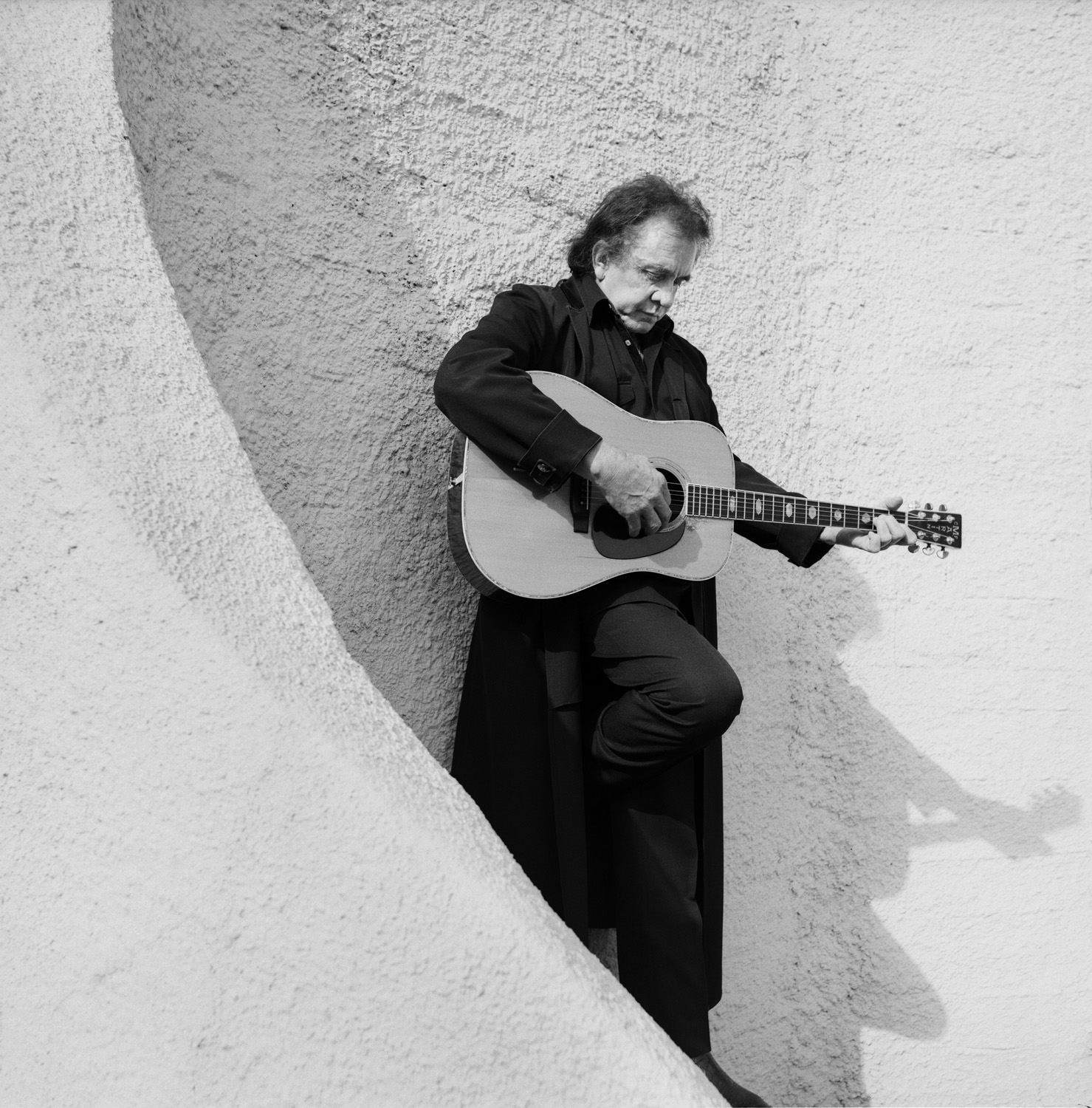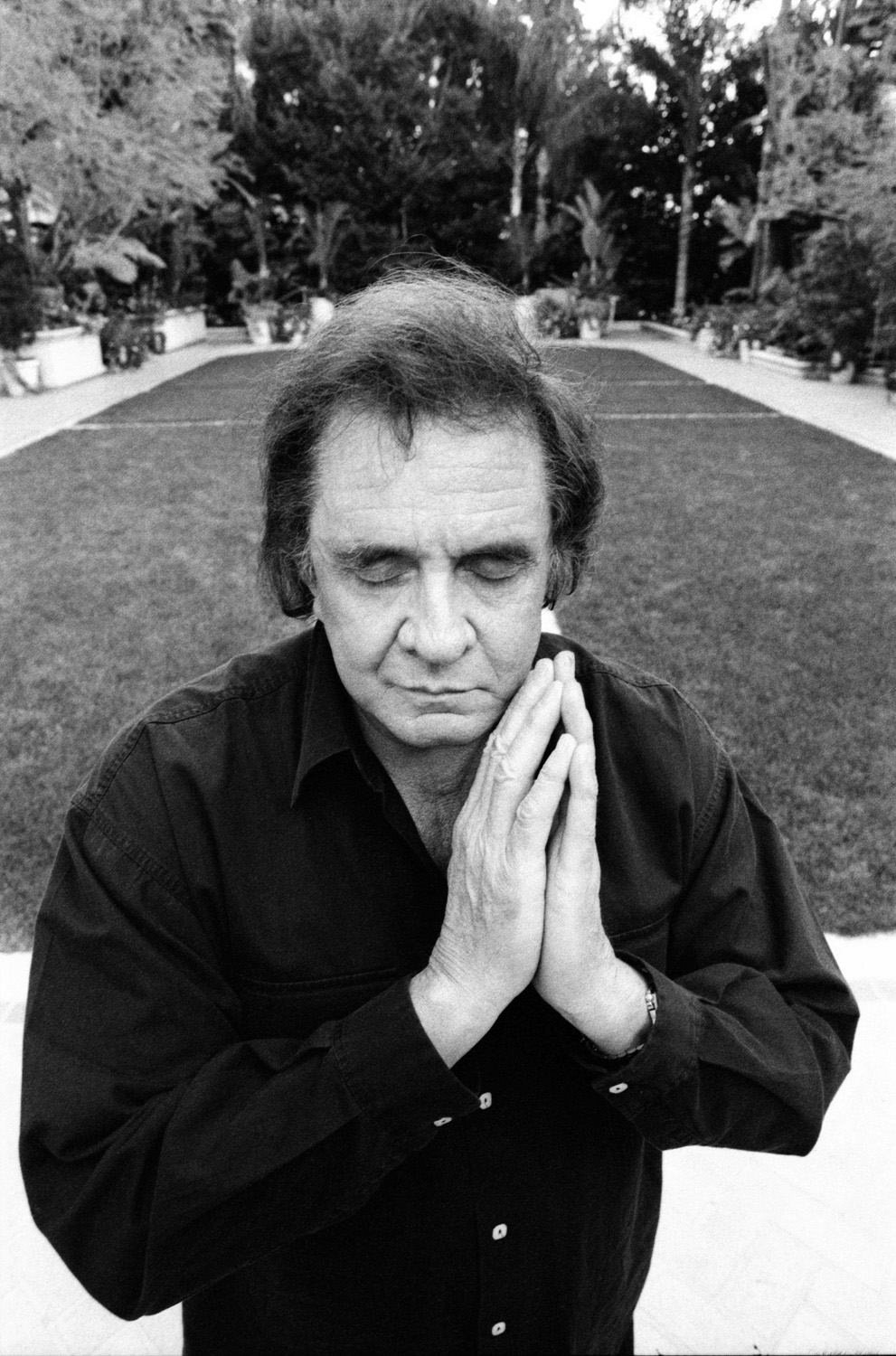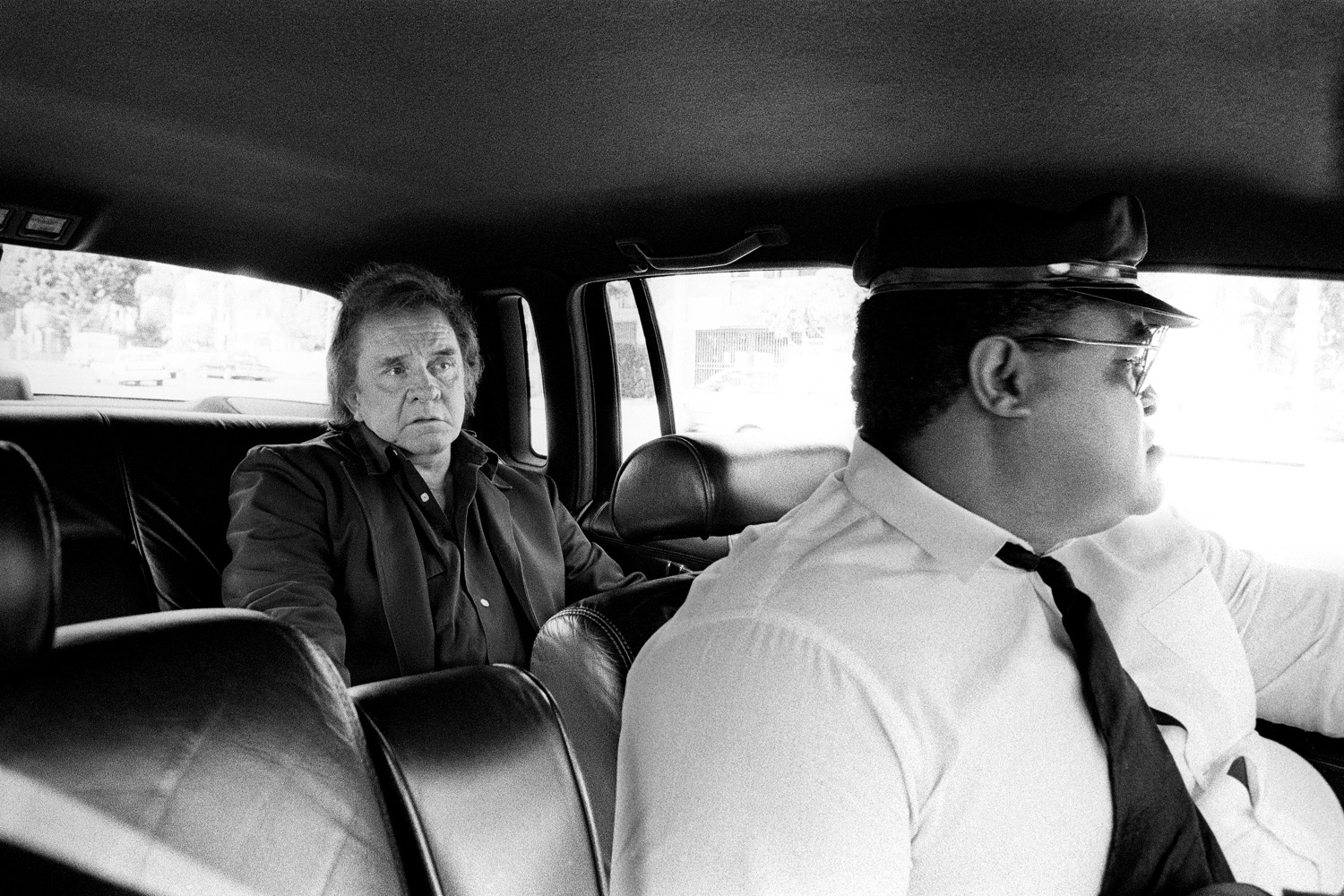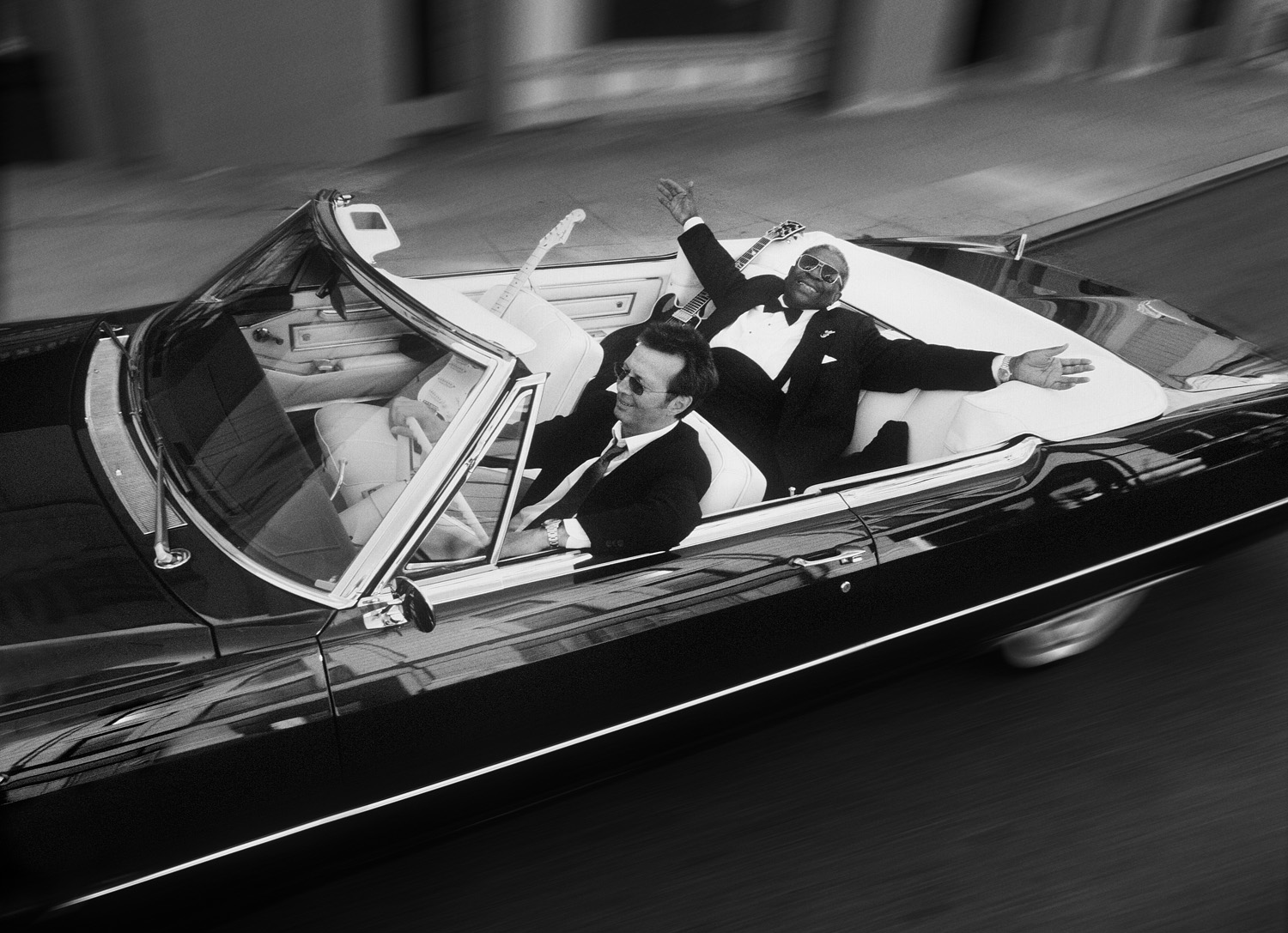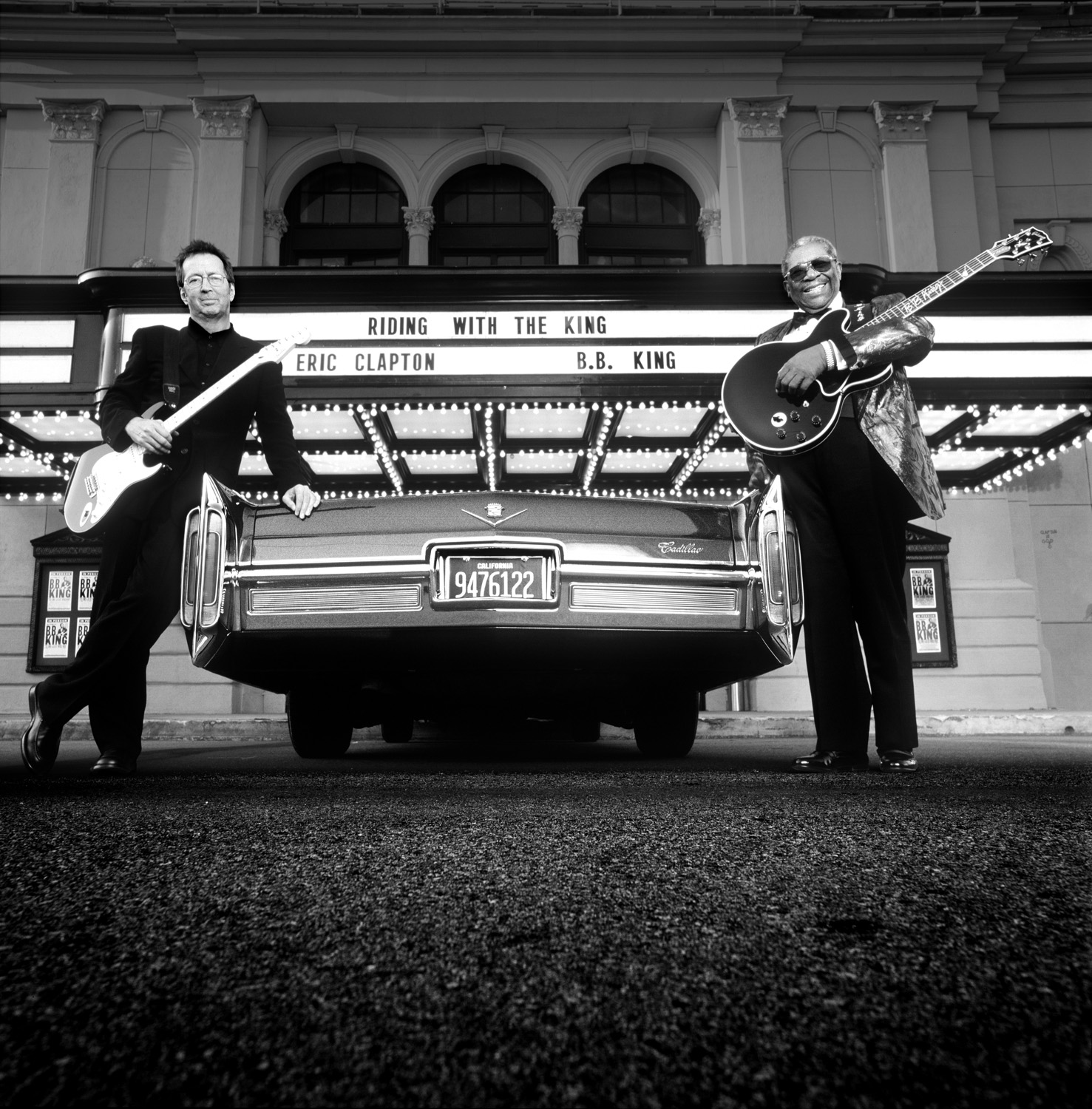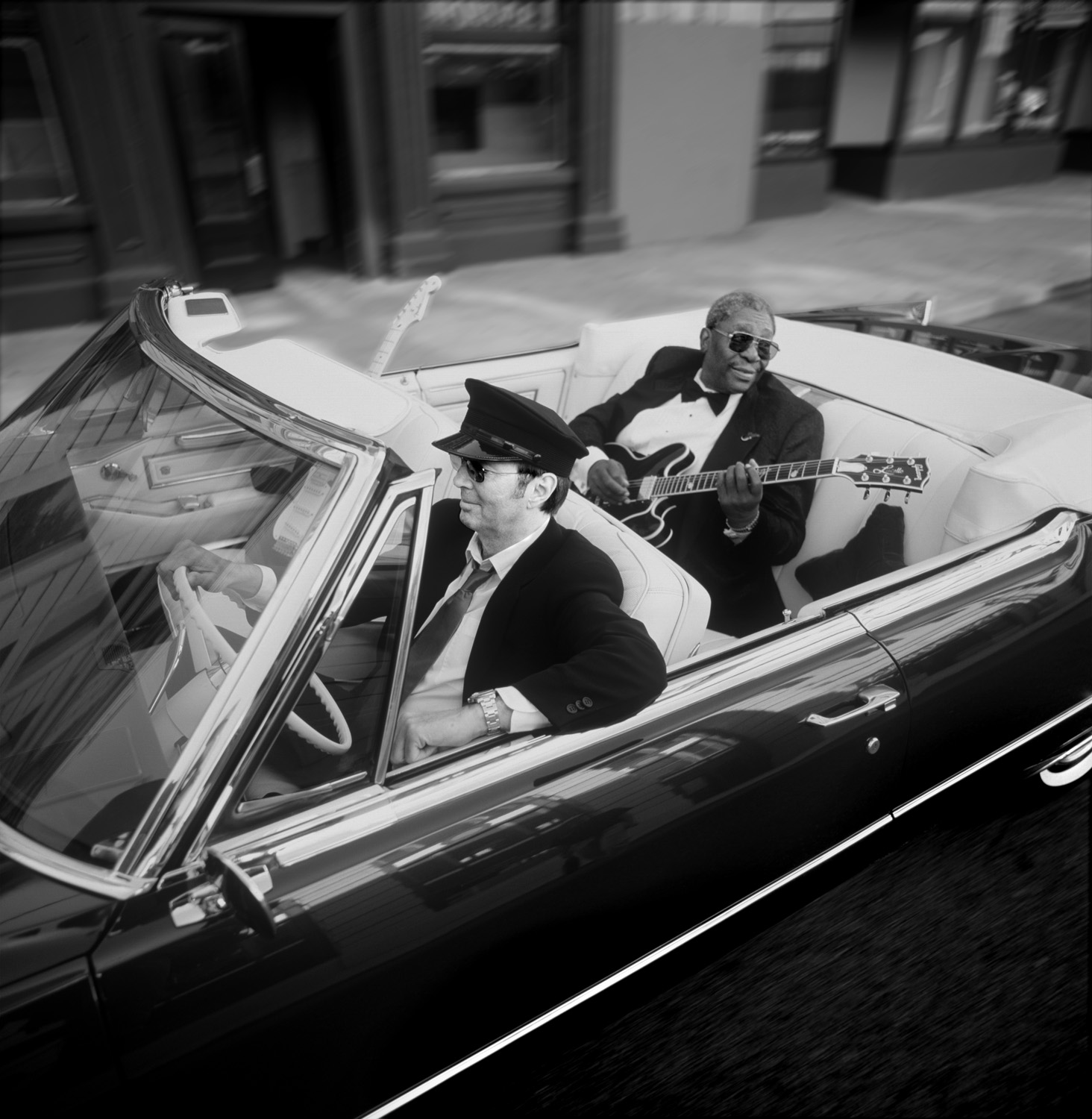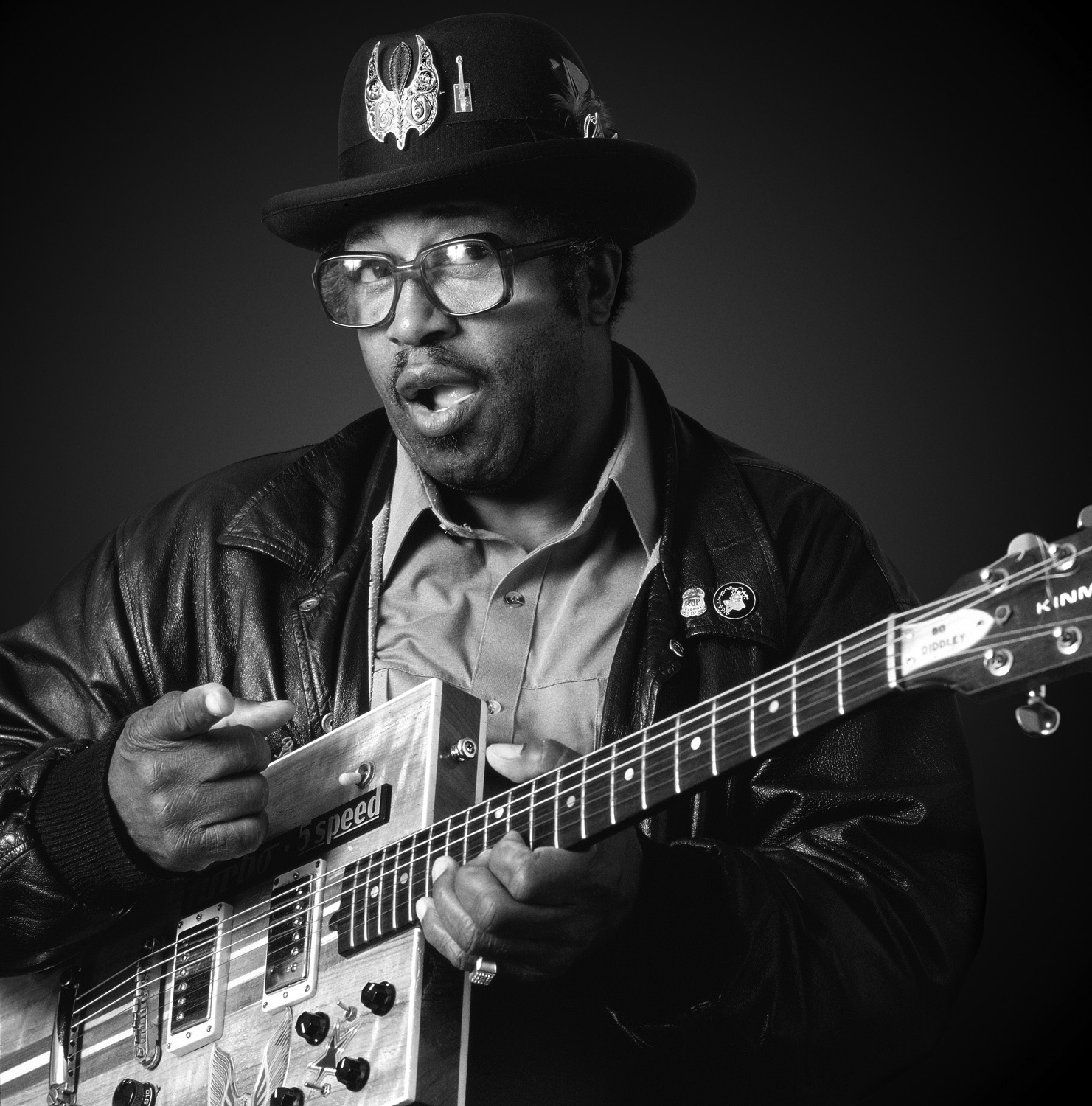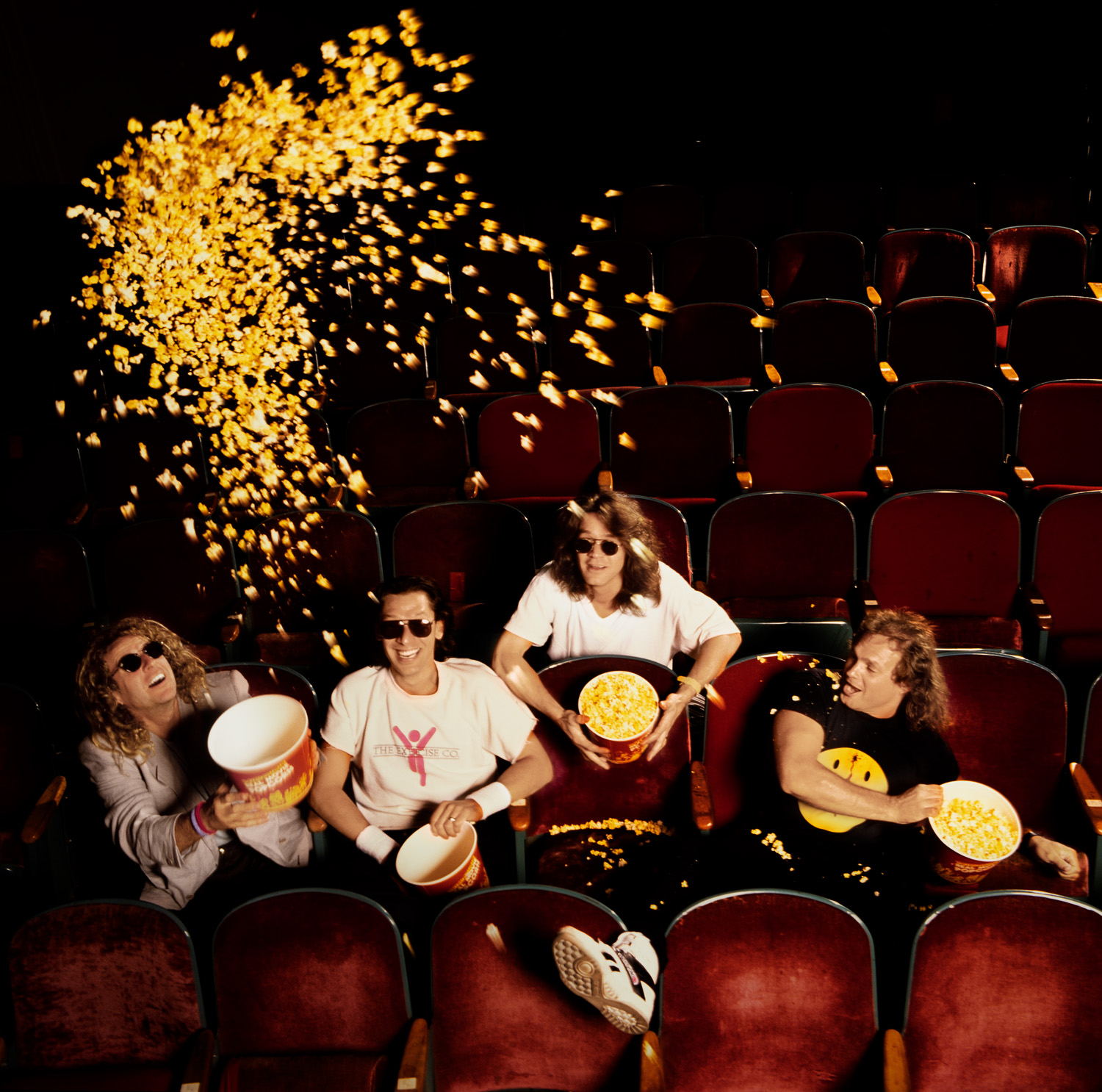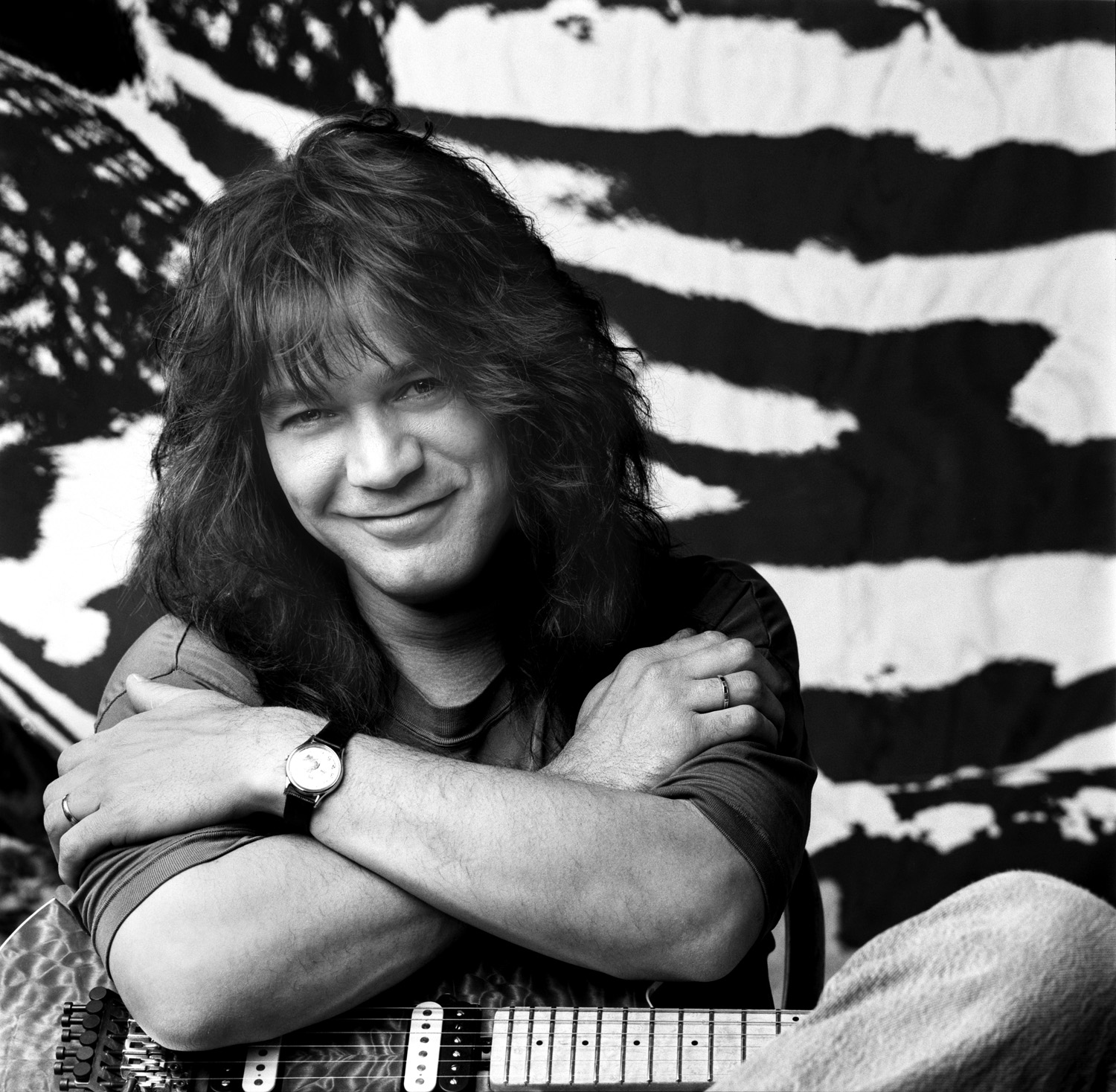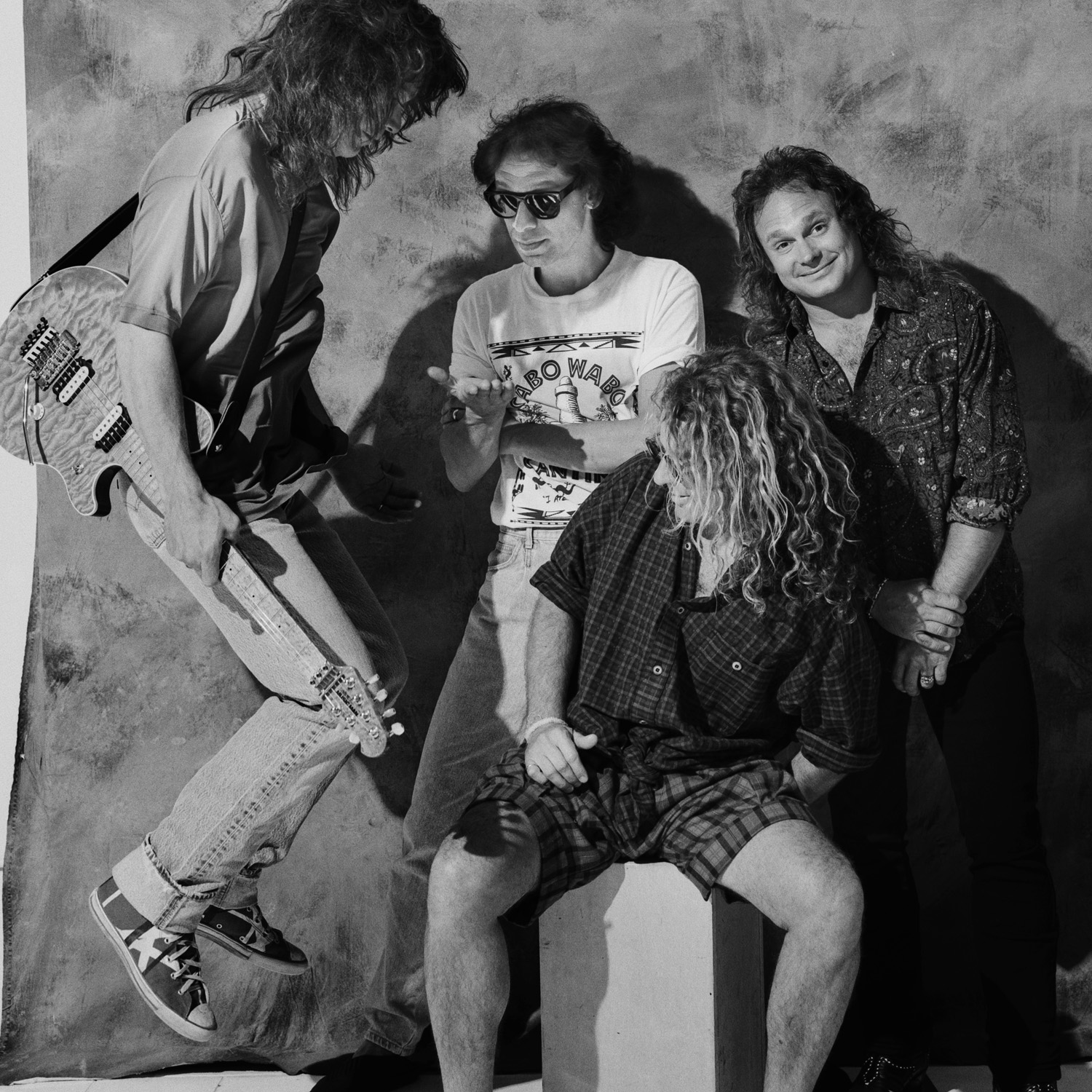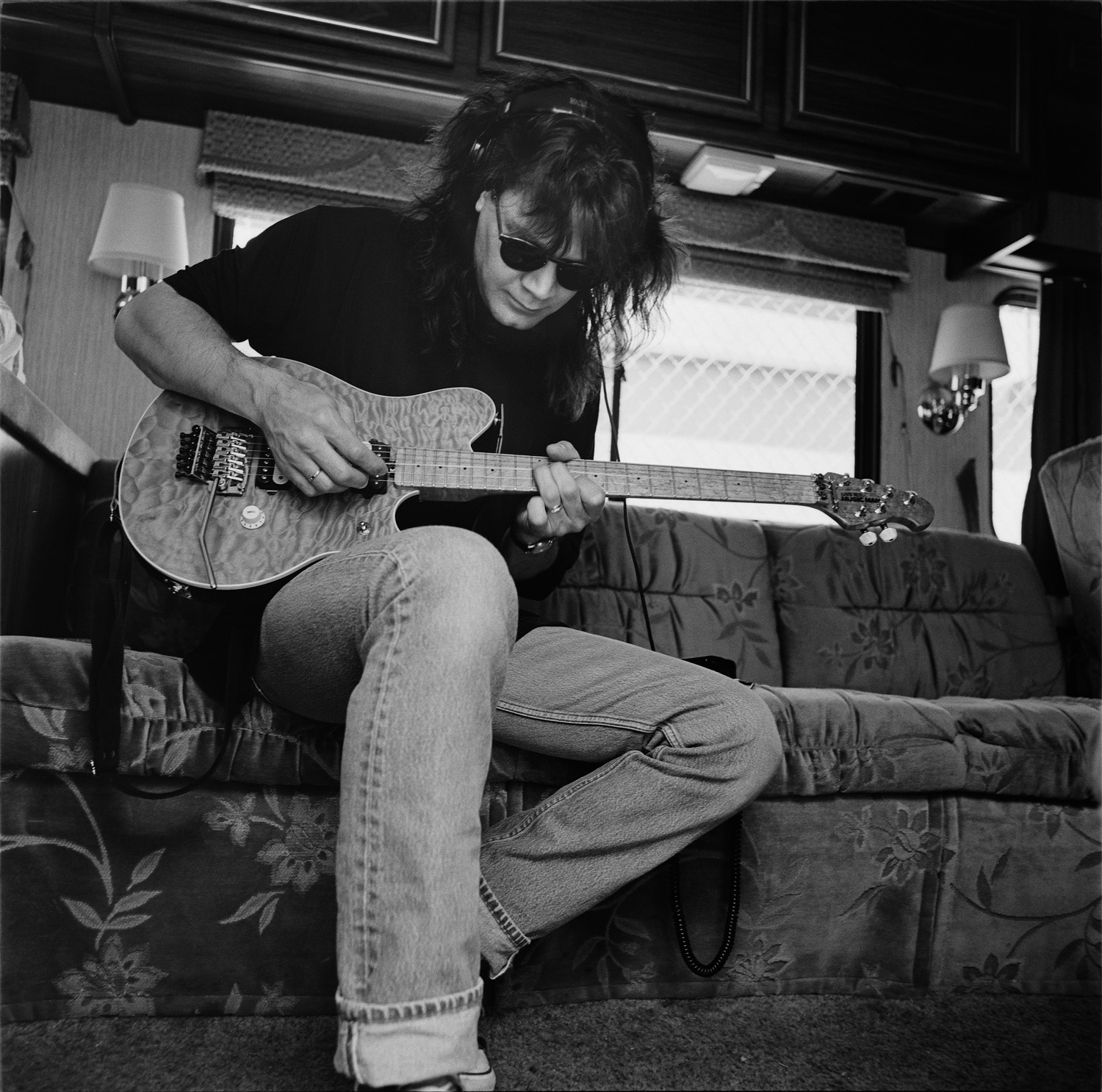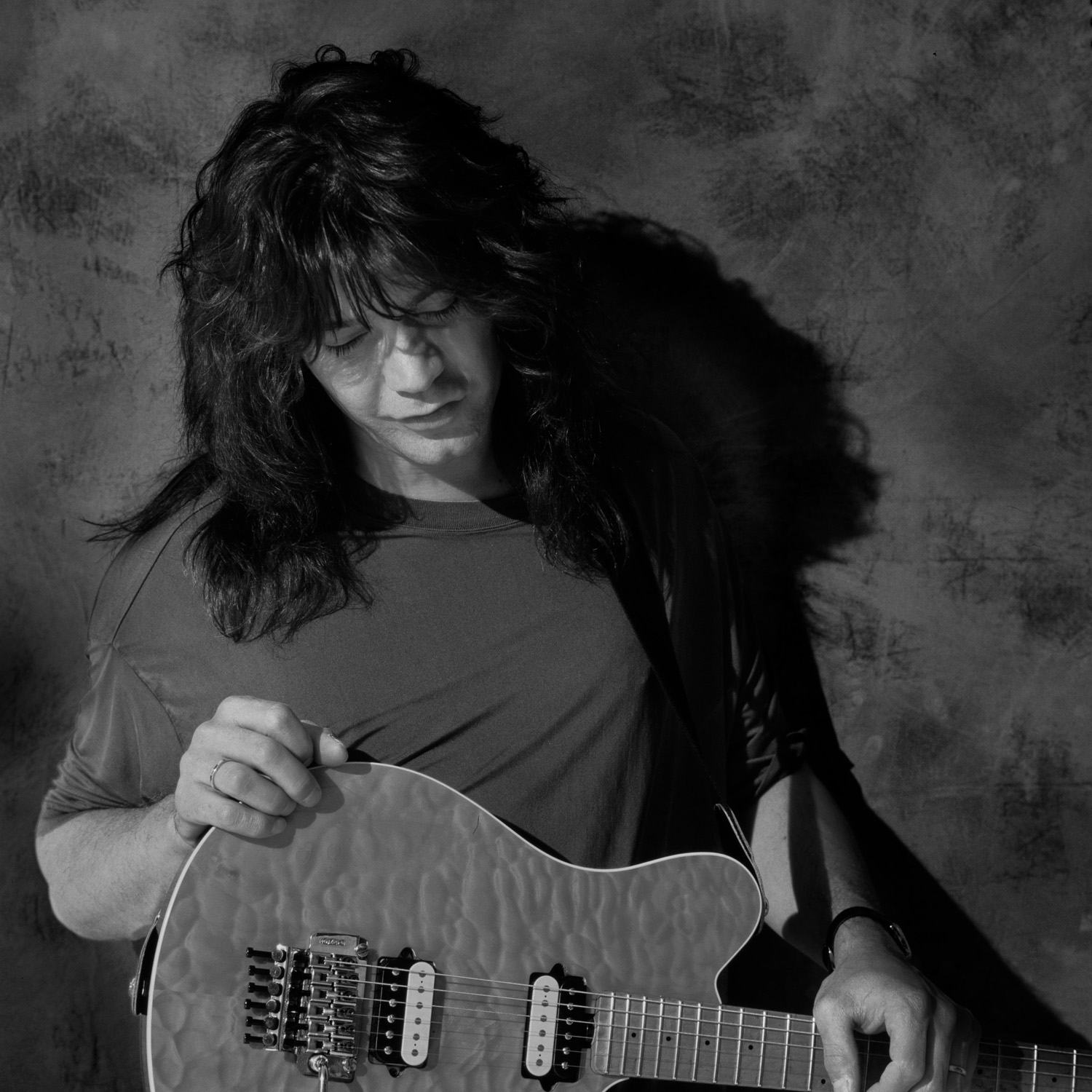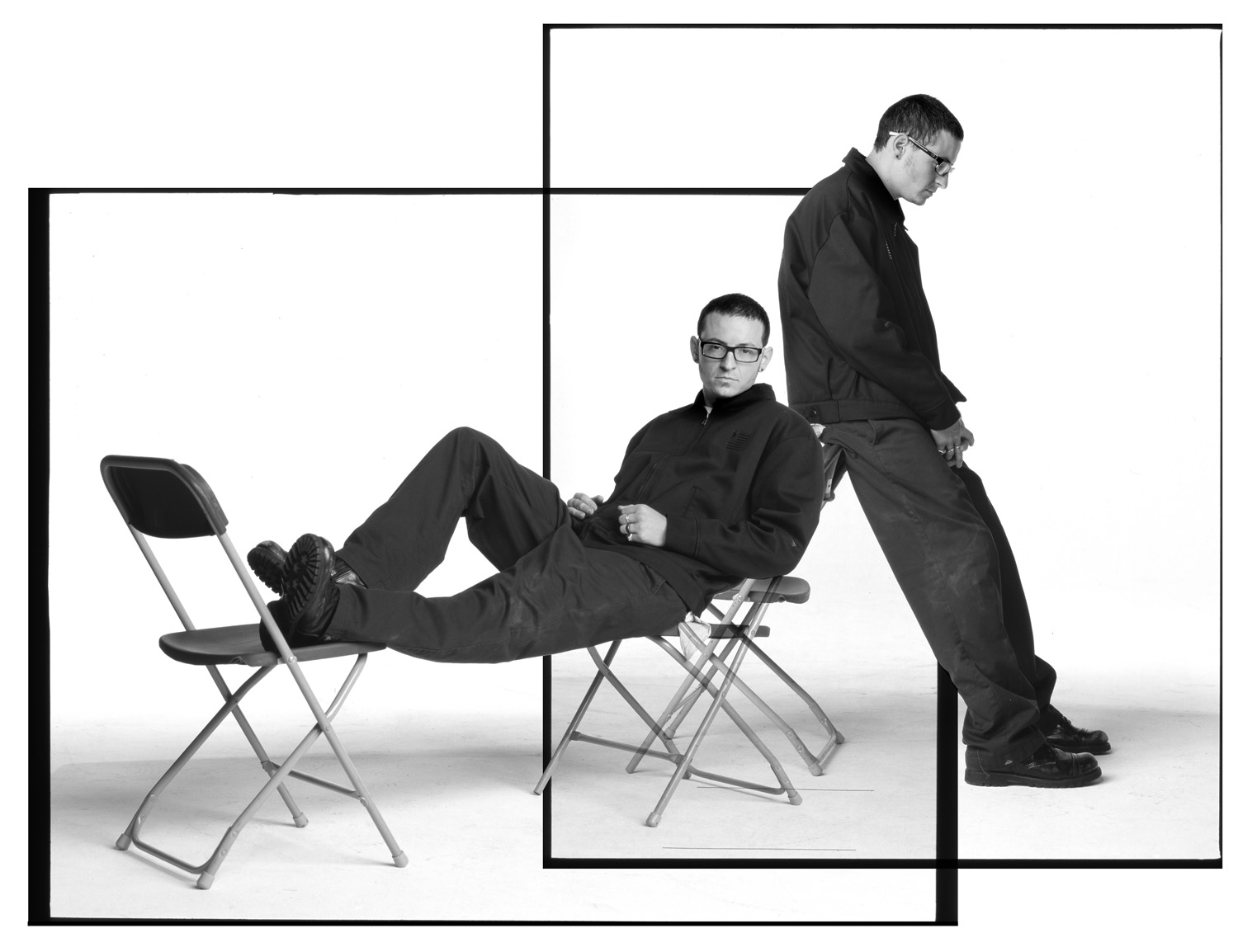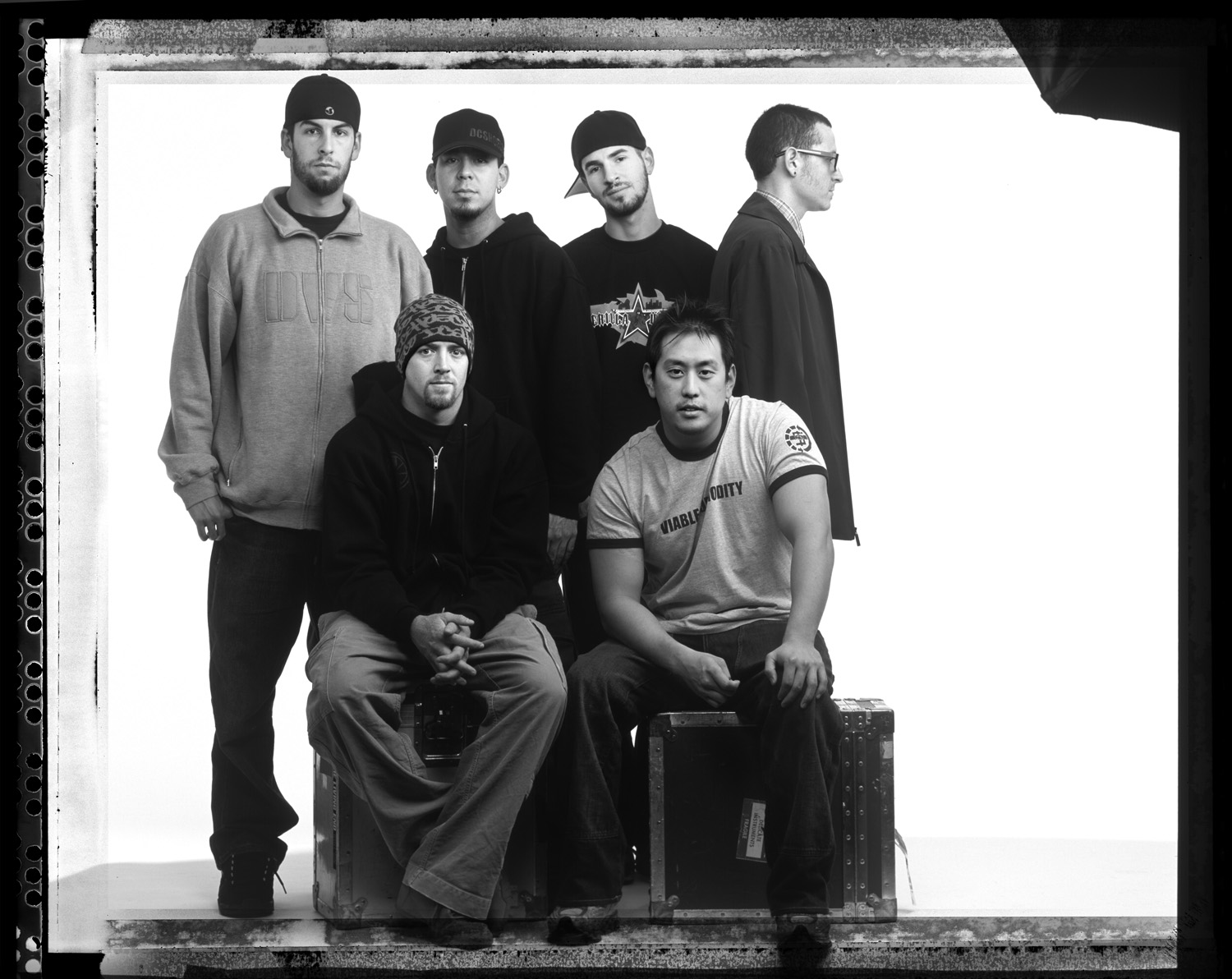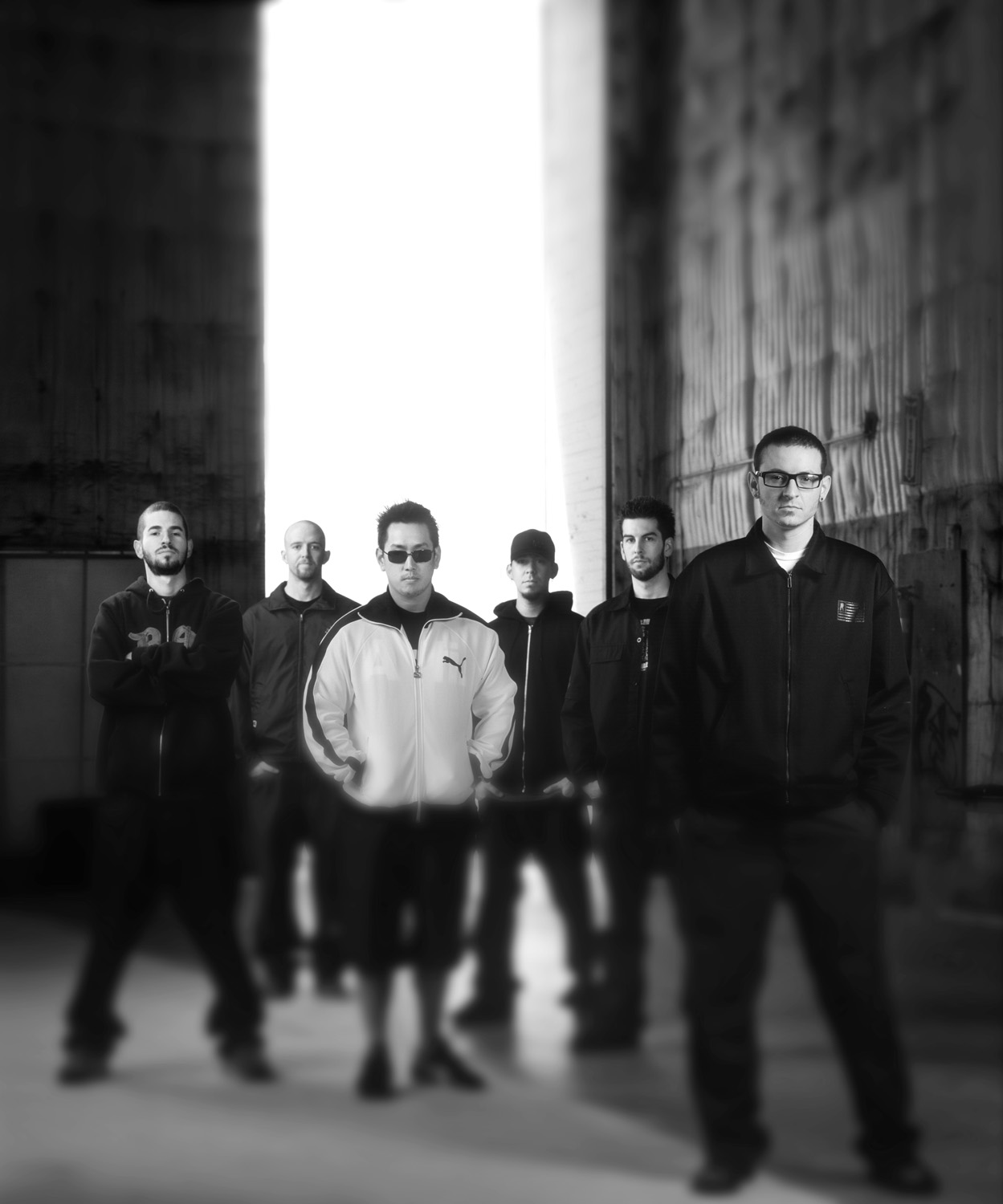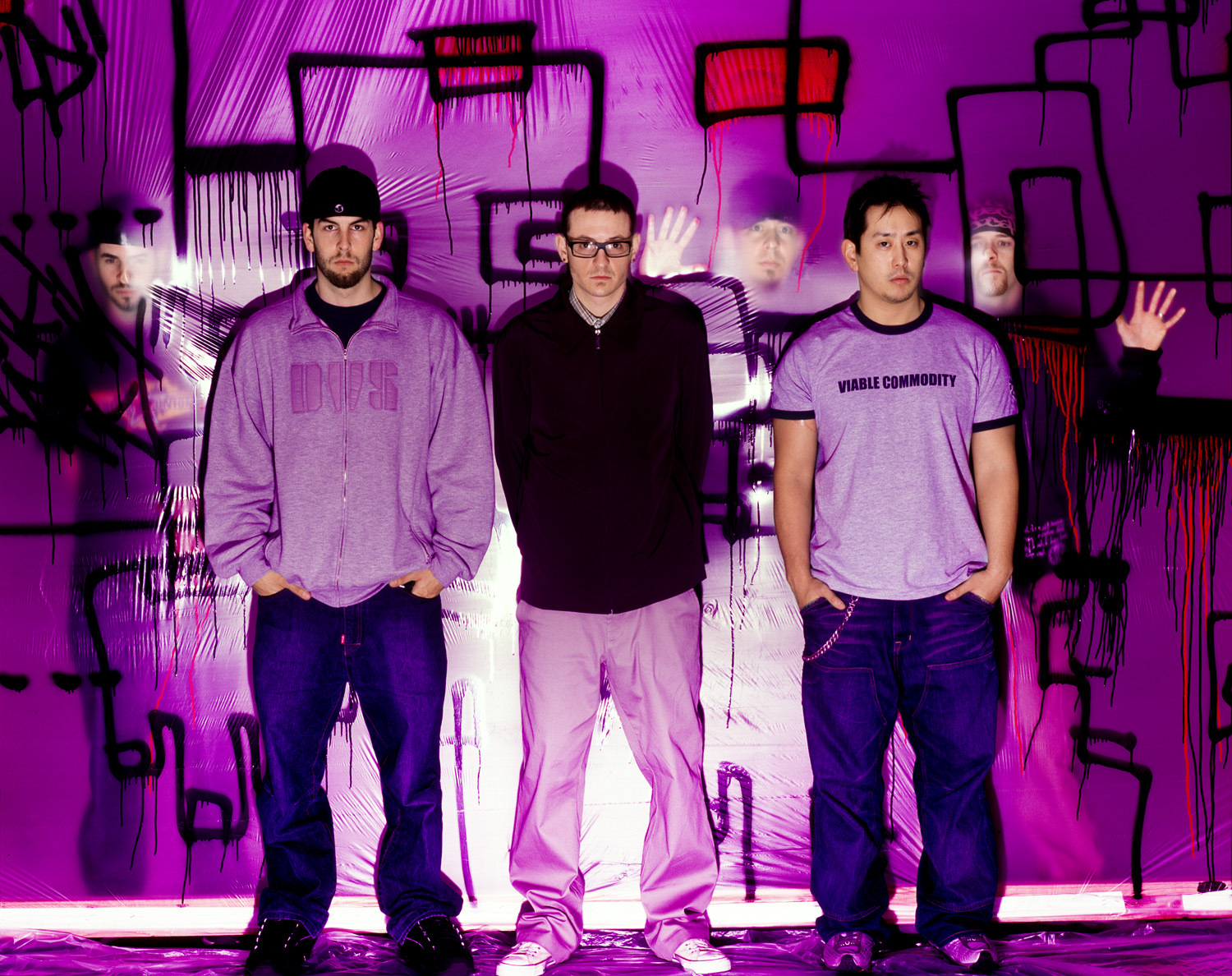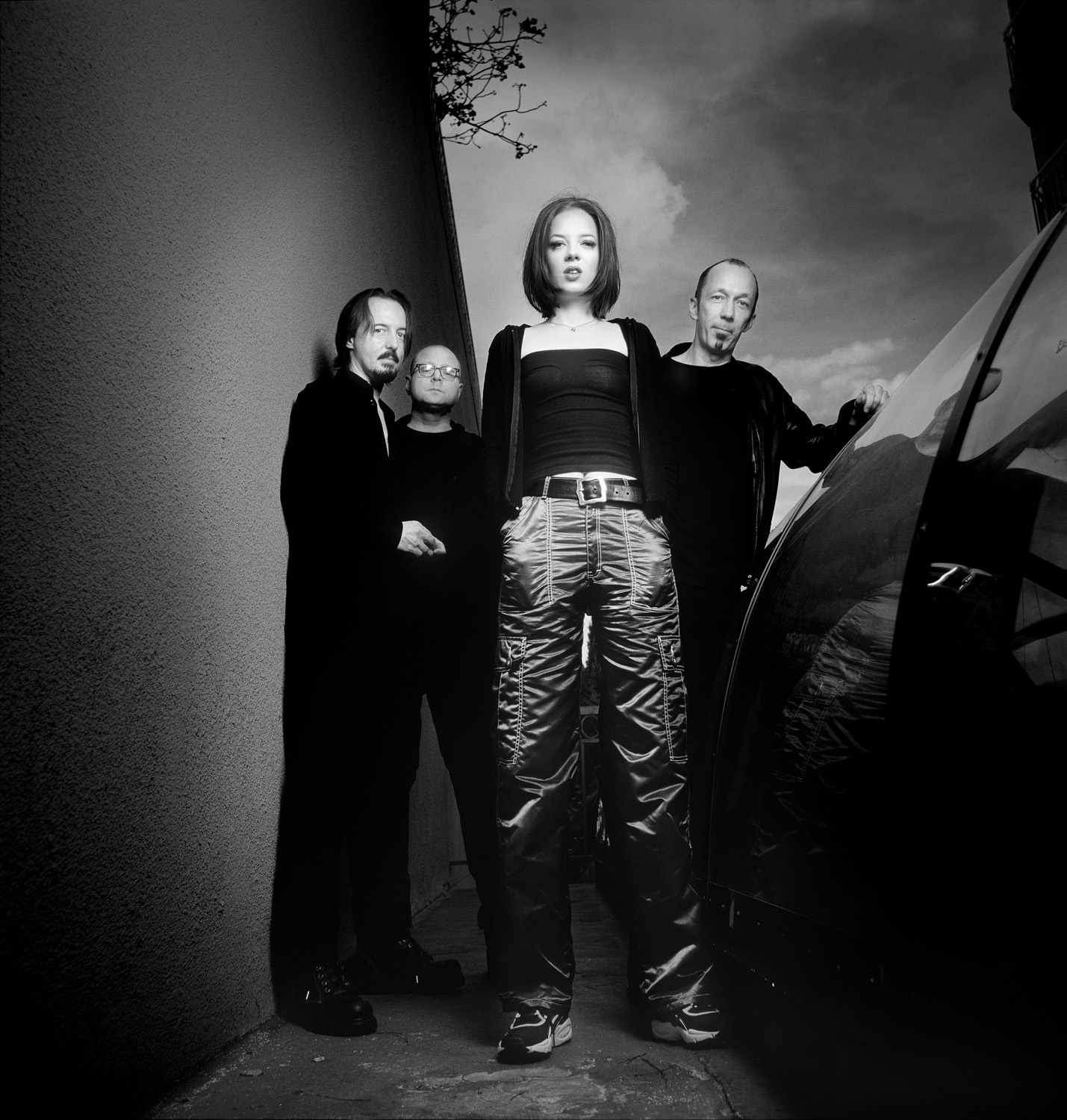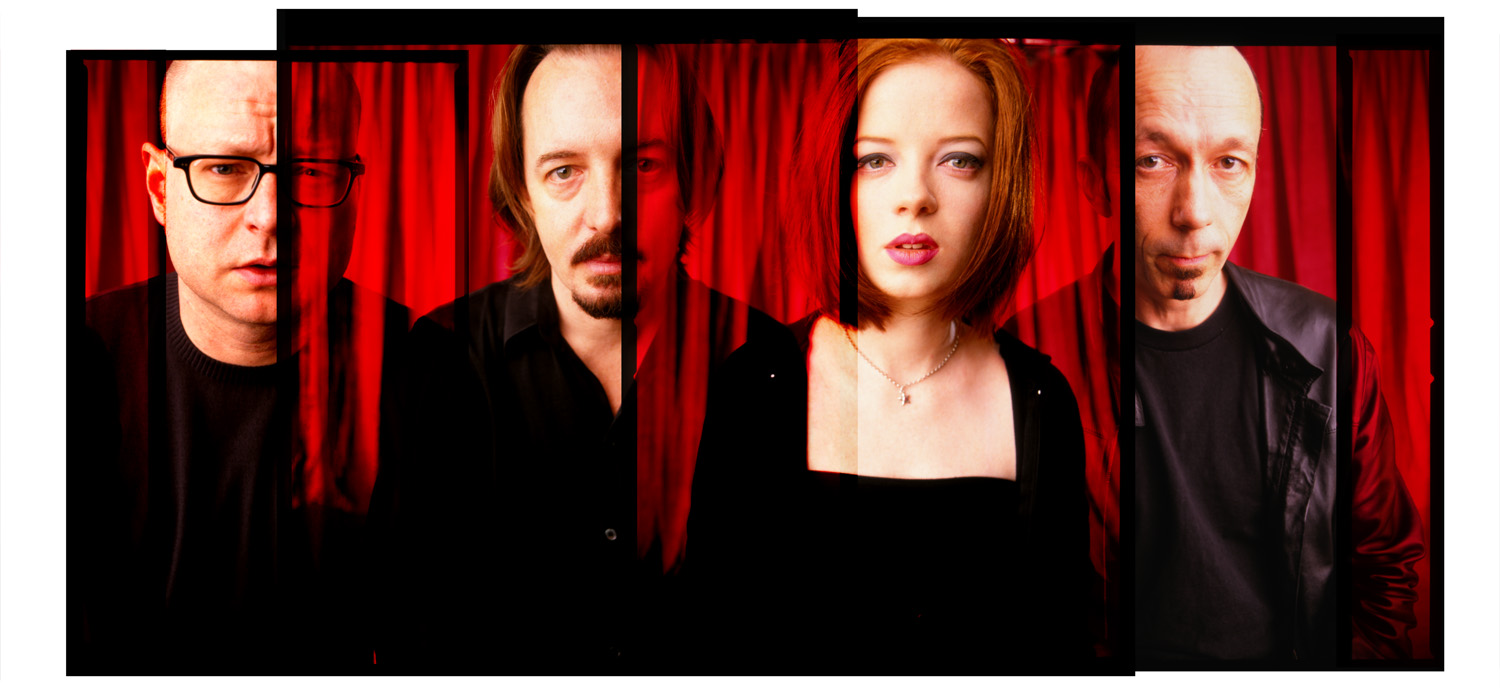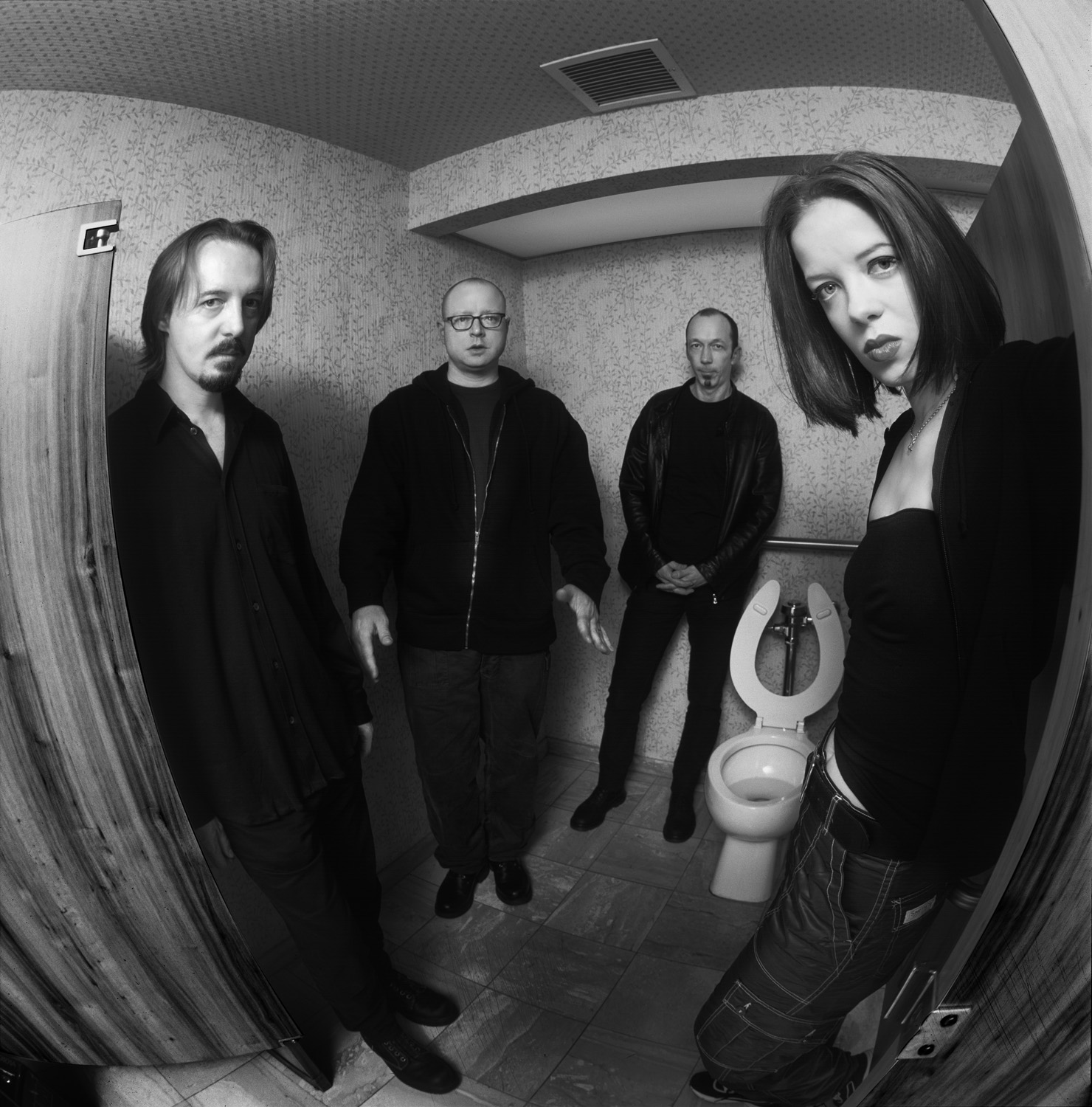Robert Sebree
Los Angeles based Robert Sebree is probably best known for his photographs of Tom Petty, but his archive is considerably broader, covering Roy Orbison, Tom Waits, Glen Campbell, Johnny Cash, Ringo Starr, Eric Clapton, B.B King, Bo Diddley, Van Halen, Linkin Park, and Garbage.
We present his photographs of Tom Petty first on this page, then as you scroll down you will be able to see images from the other featured artists. Everything is available to purchase in signed and numbered limited editions.
Photographs of Tom Petty
Robert Sebree’s photographs will need no introduction to Tom Petty aficionados. He first met Tom Petty in August 1988, and established a relationship that would endure for almost thirty years. Within minutes of their first meeting, Robert would take the photograph of Tom Petty that was selected for the back cover of Full Moon Fever, and photographed him extensively during the recording of Wildflowers in 1994.
Reflecting on his many years working with Tom Petty, Robert Sebree explained: “Tom permitted to me be that fly-on-the-wall for years as he and the Heartbreakers conjured the magic to produce a legendary body of work. Along the way we shared some incredible moments, in front of and behind the camera. I developed a deep respect for Tom beyond his art. We laughed a lot and I saw him suffer some blows. We celebrated birthdays and attended memorials. I witnessed his happiness as Little Richard presided over his wedding and mourned our loss when his large extended family gathered to remember him. I join the world in missing Tom Petty.”
The limited editions
We are delighted that Robert has chosen Snap Galleries —as the first gallery anywhere in the world— to offer you the opportunity to purchase signed limited edition Tom Petty photographs from his archives. Robert has selected some of his favourite images of Tom Petty for you, and shares his stories behind them as you scroll down the page. By clicking on the green button under each image you will see price and size options. Please get in touch with us if you have any questions.
We have also created a virtual gallery space where you can view Robert’s photographs framed and hanging on the walls in a variety of room settings. You will find a link to this virtual gallery further down below as you explore this page.
Full Moon Fever (1988)
August 1988 – Point Dume, California
Robert Sebree recalls: “I made this photograph within minutes of first meeting Tom. When I introduced myself he smiled and said with a slow, exaggerated southern draw “If there’s anything I can do for you, you just let me know”. As we carefully made our way across some jagged rocks along the beach he mentioned that if he slipped he would bleed a steady stream of the weed he had flowing through his veins. You don’t forget that kind of “Hello”. At the time I had no point of reference to base this experience on but as we continued to work together over the years I came to realize the ease with which we got on from the beginning.
Shortly after shooting this image, Tom’s art director requested a meeting. Rather than deferring to the label’s art department Tom would hire his own creative team so he could oversee the art himself. The cover to Full Moon Fever had already been determined but they were interested in my images for promotion. This image was used full-bleed for the album’s back cover.”
Beyond the Groove (1988)
August 1988 – Encino, California
Robert Sebree explains: “I became a reoccurring occurrence in Dave Stewart’s (Eurythmics) life when I was assigned to photograph him for three different clients in a ten day period. Dave was producing a project called Beyond the Groove and asked me to shoot stills for it. I never saw a script on set, pretty sure there wasn’t one. The project had a Magical Mystery Tour vibe that cast Dave’s eclectic roster of friends in scenes featuring iconic tableaus of Southern California.
Tom was interested in every aspect of his work which in 1988, for better or worse, was entwined with the film industry as the labels courted MTV. When there was a break in filming, Tom could be found holding a boom pole with the sound crew or studying how things worked from the other side of the camera.”
The Gainesville Five (1993)
July 1993 – Woodland Hills, California
Robert Sebree explains: “This is my homage to Richard Avedon’s portrait of the Chicago Seven. I chose to play with the form and use the broken format to introduce each band member twice creating a line-up that could not exist in a single frame. The pre-Photoshop era demanded solutions to be a bit less obvious. Of the countless ways that digital has impacted photography I believe this, the way we conceive of images, may be the most significant.
After a few long days in Mike Campbell’s home recording studio with all of the Heartbreakers Tom suggested a band photo. The next day I arrived early and set-up a small seamless and a few lights in one bay of Mike’s garage. That night as the band members were headed to their cars I opened the door and flipped on the lights.
It was a calculated risk springing a shot that was difficult to explain on exhausted band members after a long day. The set was only wide enough to shoot three band members at a time and I was standing outside in the dark shooting through the garage door with an old view camera. The confusion was compounded by the fact that I repositioned them after each sheet I exposed. Fortunately, Tom was intrigued by whatever I was trying to do so with his encouragement we knocked it out in just a few minutes.
The images on the periphery of each frame are my favorite moments as they were unposed. Tom appreciated that this image gives a real sense of the personalities that made up the band. The tension developing between Tom and Stan is on full display here. It’s no wonder considering Stan’s stance in the far right frame and tangling with Tom in Benmont’s frame (far left) that just two weeks later at the Viper Room I would make my last images of Stan before he left the Heartbreakers.
Tom chose this image for a benefit auction at the New York launch of Tom Petty And The Heartbreakers Runnin’ Down A Dream on November 14, 2007.”
Tom Petty and the Heartbreakers – Live at the Viper Room (1993)
August 1993 – Viper Room, Hollywood, California
Robert Sebree explains: “This image marks the only time I ever photographed Tom playing to a live audience. Tom had just completed the Greatest Hits package and was considering cover options when Johnny Depp asked him to play at the opening of the Viper Room on Sunset. Tom realized this would be the last time anyone would ever see the whole band playing together in a bar on a tiny stage reminiscent of how they began – the perfect Greatest Hits cover.
Perfect except that Tom and Stan’s relationship was almost at the breaking point and Stan decided to remain in Florida and skip the gig. Tom called Ringo Starr and asked him to sit in for Stan. When I went to the Viper Room that night I was expecting to see Ringo on drums but evidently Ringo was just the impetus Stan needed to jump on a plane. Tom Petty and the Heartbreakers Greatest Hits—the band’s best selling album of all time—very nearly featured Ringo on the cover.
There was a strict “no cameras” policy for the invitation-only crowd but they made an exception allowing me to photograph the first song of the set. A couple of minutes in a crowded room to capture an image to represent Tom’s entire career… what could go wrong? The light was dismal. The stage only rose a foot or two from the floor so I had to shoot through the crowd. Benmont was shoved so far stage right that he was separated from the band by his keyboards. I positioned myself directly in front of the stage to get all five band members in frame but Benmont was cast in total darkness. I decided to move stage left and shoot down the line of Howie, Tom, Mike and Benmont but the room was too cramped to get the angle I needed on Stan. From other angles either Benmont or Stan were blocked by their own instruments. All the while, there was a very excited, good-natured fan enjoying the show, apparently unaware of my plight, who was insistent on dancing with me. It was mayhem.
This image and one other image from the show were briefly considered for the cover but were rightly discarded because neither of them included all of the Heartbreakers. The image used was a photo that survived the fire in Tom’s basement recording studio in the house he lost to arson in 1987, inspiring the song “I Won’t Back Down.”
Wildflowers sessions (1994)
“Wildflowers was where I was at the top of my game as far as craft and inspiration colliding at the same moment.” Tom Petty
Wildflowers sessions, with microphone (1994)
1994 – Sound City, Van Nuys, California.
Robert Sebree recalls: “I distinctly remember this being a good day. The band worked through versions of “To Find A Friend”, “Only A Broken Heart”, “Climb That Hill”, “Honey Bee”, “You Wreck Me”, “California”, “It’s Good to be King”, “Time to Move On”, “Cabin Down Below”, “Thirteen Days” and more. I have no idea how much, if any, from this session ended up in the final mix.”
Wildflowers sessions, Climb the Hill (1994)
1994 – Sound City, Van Nuys, California.
Robert Sebree explains: “ In July of ‘93 I was asked to photograph Tom and the band as they worked on bonus tracks for Greatest Hits. I expected the project to take a day or two. I spent much of the next two years chronicling the recording of Wildflowers at Sound City in the Valley and Ocean Way in Hollywood.
This was shot during the recording of “Climb the Hill” (released on Wildflowers & All the Rest).”
Wildflowers sessions, Tom with velvet Elvis (1994)
Wildflowers sessions, It’s Good to be King (1994)
1994 – Sound City, Van Nuys, California.
Robert Sebree explains: “ Everyone immediately realized that Wildflowers had a special energy. It was powerful and palpable. The major changes Tom was going through, both personally and professionally, precipitated a prolific time for him.
In this photograph Tom is tracking “It’s Good To Be King.”
Wildflowers was his first solo album since Full Moon Fever, his first collaboration with producer Rick Rubin and his first album for his new label, Warner Brothers. Even though it was a solo album Tom leaned heavily on the musicianship of the Heartbreakers and this marked the introduction of drummer Steve Ferrone to the band. The chemistry was so good it bordered on alchemy.”
Wildflowers sessions, at Sound City (1994)
1994 – Sound City, Van Nuys, California.
Robert Sebree remembers: “Tom recorded a lot of his tracks live—which was just amazing. Not a lot of bands have the chops to do that. The Heartbreakers were so tight, they made it look easy. Tom, Mike and Howie would sit in a triangle facing one another in the middle of the studio. The stool in the foreground is Mike’s. Howie was just off to Tom’s right with Benmont’s keyboards behind him. Steve was on drums off to Tom’s left.”
Tom’s Backyard (1994)
July 1994 – Encino, California.
Robert Sebree recalls: “I was over at Tom’s house and was playing with a cheap, plastic, toy camera. It offered none of the photographic threat of my Hasselblad. This was shot in Tom’s backyard and is an image that just wouldn’t have happened with a “real” camera.
Much is made about the “decisive moment” – that instant where one chooses to expose an image. Of equal importance, but rarely discussed, is when not to expose an image. I would never lift my camera without getting a vibe for the room. If there was a chance my camera could upset the balance of the session I would abandon it in another room. This practice wasn’t lost on Tom and I am sure factors into the longevity of our relationship.”
Tom Petty in his home studio (1994)
July 1994 – Encino, California.
Robert Sebree recalls: “This image was shot in Tom’s home studio. When his daughter, Adria, was researching images for the Wildflowers & All The Rest project she was delighted to discover it. Adria explained to me that she was surprised to find this image as it was a private space where Tom would “disappear with his coffee” to write songs and record demos. This room could be considered the birthplace for many of Tom’s songs.”
Tom Petty in Robert Sebree’s studio (1994)
October 1994 – Sebree Studio, Los Angeles, California
Robert Sebree explains: “Tom created a vibe in the studio when he recorded that often challenged me photographically. In the pre-digital days photographing band members by candle light tested the limits of film stock. After a particularly dark session at Sound City where the the room was perhaps better suited for processing film than exposing it, Tom took note of my plight and suggested we make a few photographs at my studio—where I could actually see what I was shooting.
Tom arrived in a good mood. It was the week before his 44th birthday and his guitar tech, Alan “Bugs” Weidel, drove him to my downtown studio in his pick-up truck. Tom liked to keep things organic, he didn’t want any of the trappings of a typical shoot—no groomer, wardrobe, caterer or even my assistant. As Tom noted “I like to know who’s taking the picture”. He walked in with a couple of suits thrown over his shoulder and we got right to work.
We never discussed any direction before the shoot. I had four sets pre-lit and ready to go before he arrived. We shot three of them. This was the last set-up and oddly reminiscent of the recording studio that had been too dimly lit to photograph. Dark tapestries festooned the walls, and layers of Persian rugs covered the floor, illuminated by just a few candles.
The first two set-ups have been widely published. This was our favorite. We shelved it for later use— but until now it was never pulled off that shelf.”
Tom Petty – rehearsals (1995)
February 1995 – Hollywood, California
Robert Sebree explains: “Before a big tour Tom would rent a soundstage at one of the movie studios so they could work out all of the lighting and logistics while rehearsing. This was shot on a sound stage in Hollywood while rehearsing for the Dogs With Wings tour.”
Scoring She’s The One (1996)
March 1996 – Andora Studio, Hollywood, California
Robert Sebree recalls: “Initially Tom agreed to be music director for the film She’s The One but quickly realized he was better suited to create music than to curate it and was persuaded to score his first film. Tom once referred to She’s The One as “almost volume two of Wildflowers” as many of the songs that comprise the album were outtakes from the Wildflowers sessions.”
At Village Recording (1996)
March 1996 – Village Recording, West Hollywood, California.
Robert Sebree reflects: “Tom was scoring his first film, She’s The One for Ed Burns. The timing was good and the project served as a welcome diversion from his ongoing divorce. He had moved out of the family house and was adjusting to living alone for the first time in years. Over lunch one day I mentioned that I was in the middle of my divorce which provided the common ground we needed to engage in topics a little deeper than our typical conversations.
After a long day in the studio I would often get a call from Tom that would last for hours as we discussed everything except the day we had just spent together. He spoke as if we were going through the same thing and I argued that our circumstances were very different – most obviously that he had children and a mountain of assets. He made me realize that in the ways that mattered that we were experiencing a lot of the same pain, turmoil and uncertainty, as well as a sense of excitement—because our futures no longer seemed preordained.”
In ’54 Chevy panel truck (1999)
February 1999 – Santa Monica, California
Robert Sebree recollects: “Tom took an interest in a hot rodded ’54 Chevy pickup I had driven to a previous session, so even though I was still in the process of converting this ’54 Chevy panel delivery into a grip truck I decided to use it to haul my gear to the shoot. When I saw Tom’s eyes light up at the site of the van I think we both knew this shot was going to happen.
After we finished the shoot we went out to the van and hung out. Tom would strum the guitar while we talked and then break into a song which was punctuated with the occasional photograph. The van unlocked some memories for Tom. His father had the same panel truck that he used to drive around Florida wholesaling cigarette lighters to grocery stores when Tom was a kid.”
Portrait session (1999)
February 1999 – Los Angeles, California
Robert Sebree reflects: “This image was shot a few months before Tom remarried and he was in a great space. Tom was always more comfortable being photographed in his element than sitting for a formal portrait. I made a series of portraits during this period and sensed a greater level of trust. He was very content which I believe allowed him to connect with the camera and embrace the process with greater ease.”
Last DJ sessions (2002)
January 2002 – Cello Studios, Hollywood, California
Robert Sebree explains: “Tom’s previous album, Echo, was crafted during a pretty dark time for the band and I felt like we were setting the clock back to a better time when we went into the studio for The Last D.J. This album marked the return of Ron Blair to the Heartbreakers replacing Howie Epstein on bass after Howie had replaced Ron twenty years earlier.”
Visit the Tom Petty virtual gallery
Click on the green button below to view our beautiful virtual reality gallery featuring Robert’s Tom Petty images framed and on display.
This is a gallery that we have designed from scratch and that only exists in the virtual world. The space consists of three elements: a large central room with high ceilings and white walls, a mezzanine floor accessed by a spiral staircase, and a smaller, more personal viewing room with a feature brick wall. You can navigate around the space simply, and click on individual artworks to view price and size information. I hope you enjoy experiencing the virtual collection.
Roy Orbison
Robert Sebree explains: “I am occasionally asked who I consider the kindest person with whom I have worked, “Roy Orbison” is often my answer. Before I got to know him as “Lefty Wilbury”, I photographed Roy Orbison for Virgin Records to support Mystery Girl where I was directed to make “lonely, mysterious” portraits. The images for his posthumous album King of Hearts came from this session.”
Tom Waits
Robert Sebree explains: “I had many long conversations on the phone with Tom to plan this shoot and while we got comfortable with one another we never really got down to discussing the session. Having no track record nor an agreed-upon plan, when I arrived in Northern California my crew and I spent the day scouting locations and filling a rental van with whatever random props we could scavenge. The next day Tom met me at our hotel for the shoot and saw the van—which by now had an old boat strapped to the roof—which I believe alarmed him. I told him we didn’t have a plan but wanted to have options when one came along. He suggested I jump in his truck and have my crew and his publicist follow us in the van. As we drove the backroads around Santa Rosa it felt a lot like the phone calls as the shoot wasn’t the topic of conversation until we would happen upon something interesting. After several stops, a few of which we made nice images, it was getting dark so we decided to pop into a hotel rich with character where you pay by the hour.”
Glen Campbell
Robert Sebree explains: “A long-time friend, Julian Raymond, was writing and producing Glen and told me there had not yet been a diagnosis but they assumed Glen was suffering from Alzheimers. The label wanted to have images ready when the news broke and for his final projects.
Glen arrived with is wife and was obviously impaired. He had difficulty following the thread of most thoughts but, surprisingly, remained very upbeat and kind. When he arrived he immediately picked one up one of the many guitars we had on hand and started to play. I had only recently become aware of Glen’s groundbreaking work with the Wrecking Crew and his prolific guitar skills. He played almost continuously. When we needed to swap out one guitar for another for a different set-up he would sulk and seem lost until he had a guitar back in his hands.
We got to witness something I have only experienced once before with Brian Wilson. Glen’s condition wreaked havoc on his ability to communicate but his fingers had a direct line to his memory and his heart. His technique was meticulous, his song choices prolific and his playing was inspired. I know we all took a bit more time between set-ups than we typically would just to hear him play.”
Johnny Cash
Robert Sebree explains: “I was contacted by Rick Rubin late one night and was given a time and room number to report to at the Four Season’s the following morning to photograph Johnny Cash. I was horrified when I woke both he and his wife, June, up that morning. It was only then that I realized Johnny had not been expecting me. Johnny had been avoiding publicity photos for his new album and this was Rick’s last chance before Cash left the country. After a very awkward introduction, even though I knew he was a flight risk, I suggested I wait in the hotel restaurant. I was relieved when both he and June joined me. Rather than a formal session the day consisted of running errands with “The Man in Black.” After visiting his dentist, some clothing stores and gift shops we went to Rick’s house (where they had recorded the album) to finalize which tracks would make the album. Earlier that day I had an assistant drop off some gear at Rick’s house and by then Johnny trusted me enough to agree to a couple of very quick set-ups.”
Ringo Starr
Robert Sebree explains: “When I was asked to photograph Ringo I had already booked a job for the day he was available. Whenever this situation arises I always honor the first shoot booked regardless of the budget, talent or client. Well, almost always – I make exceptions when a Beatle is involved. The first shoot was a 12 hour day at my L.A. studio. Ringo’s shoot would take place at noon at the Beverly Wilshire penthouse in Beverly Hills. I was familiar with this penthouse and it’s access to the rooftop from previous shoots. I realized that if I could get to Beverly Hills and back fast enough, then I could hire a crew to prep and wrap at the hotel and photograph Ringo while we broke for lunch at my studio. Travel time was the big factor. I had recently interviewed a new assistant and remembered he showed up on a Harley…problem solved.”
Eric Clapton and B.B. King
Robert Sebree explains: “It was Eric’s idea that the cover to Riding With The King should be him chauffeuring B.B. in a convertible Cadillac. My job was to execute that image and come up with a few others so Warner Brothers would have plenty of art for packaging and publicity. I knew I would need a jib truck that could suspend me above, beside or in front of the car as Eric drove it. With that in mind I decided to film on Warner Brother’s backlot so Eric could drive a loop through film sets and we would not encounter any traffic, pedestrians or signage. When I scouted the lot I chose a route that went past the theater and had W.B. facilities put Riding With The King on the marquis. Eric had suggested several license plates (“BLUESMAN”, “BLUES”, etc.) all of which we had waiting in his trailer when he arrived on set. Like many, Eric was perplexed by the plate “9476122” which I had made. When I told him it would be the catalogue number for the album he immediately selected it.
Eric with the hat is a rare outtake. At one point he lamented that he wished he had a chauffeurs hat. We were looping past one of the best wardrobe departments in the world about every five minutes so we sent our stylist over who returned with several options. I think Eric liked the reverence it showed to B.B. but I felt it made the photo look cluttered and minimized Eric’s role in the project so we shot very few images with the cap.”
Bo Diddley
Robert Sebree explains: “When It was announced Bo Diddley was being initiated into the R&R Hall of Fame, Rolling Stone Magazine asked me to make the photograph. Bo was playing a wedding in Encinitas (about 100 miles south of L.A.) and the shoot would be at his hotel. From a room we had booked as a studio I saw him walking across the parking lot. I went outside and introduced myself and he informed me the shoot would have to take place in his room.
He refused to include his signature hat and would not hold his famous guitar, furthermore, he insisted on wearing the clothes he had been traveling in —and wanted the groomer we had hired sent away. I weighed the incredible significance of this man in R&R against the needs of my client. Submitting a photo that fell short of the magazine’s standards would do them no good, not to mention my reputation. Not seeing the upside to continuing, I chose to walk away.
As we were loading the gear Bo’s manager knocked on the door. To meet my demands of having his cigar-box guitar and hat, I agreed to only a single roll of film and to shoot in his room. The groomer had already left. Bo was booked into the smallest hotel room I have ever seen and his stuff was piled-up everywhere. In order to get the image the client had requested, we had to tear our backdrop in half, hang it on the wall above the bed and shoot through an open window while standing in the rain.”
Van Halen
Robert Sebree explains: “I rented Perkin’s Palace in Pasadena, California for a Paiste campaign I was shooting with Alex Van Halen in 1989. The band had played countless gigs at the “Palace” before they were a household name. I was very impressed when Alex’s bandmates showed up without warning to support him. They had a real connection with the venue and hadn’t set foot in there for many years. It was scheduled to be demolished and around every corner was another memory. It was a “full-circle” moment and the significance of memorializing the band where it all started as they shared it’s impact was not lost on any of us.”
Robert Sebree explains: “Warner Brothers booked the band in my studio for a day to get images to support the For Unlawful Carnal Knowledge tour. Images from this shoot were used on tour merchandise as well as distributed to magazines and newspapers to promote the tour.”
Linkin Park
Robert Sebree explains: “I flew to Nampa, ID to rendezvous with Linkin Park for the 11th of their 17 date Projekt Revolution Tour. We converted a large conference room into our studio as we waited for their tour bus to arrive for the show that evening. After introductions were made they asked if they could spray paint their own set. As they checked into their rooms we draped the entire place in plastic and stocked-up on Krylon. Even though the conference room had two exit doors directly to the outside we knew the fumes from the paint would make this a quick shoot. On my way to the airport Warner Brothers called and booked me for another shoot in just four days when the band arrived back in L.A. This time I booked a massive sound stage with enormous elephant doors so fumes would not be an issue if they were still in the mood to paint.”
Garbage
Robert Sebree explains: “I photographed Garbage to support their sophomore album Version 2.0. I met them in the restaurant of a hotel on the Hollywood Strip. After a late breakfast we went to a room where I photographed them against a seamless for a magazine. We wrapped the cover shot quickly and decided to go back and shoot in the restaurant, which had the vibe of a funky old diner, while my crew swapped-out the seamless for a red curtain we had rented. The restaurant was closed so we opted to shoot in the elevator, a bathroom and on the roof before returning to the room.”
Robert Sebree
With a father in the Air Force, moving locations was a fact of life for Robert Sebree. He attended high school in Japan, where he first became interested in photography. He returned to the United States and attended Texas A&M University, where he worked his way through school as a photographer and set up his first studio. After a year assisting in New York City, he moved to Los Angeles and established a studio primarily serving the entertainment industry. He still lives and works in Los Angeles.
